D-R Kazarin Peter For the safe







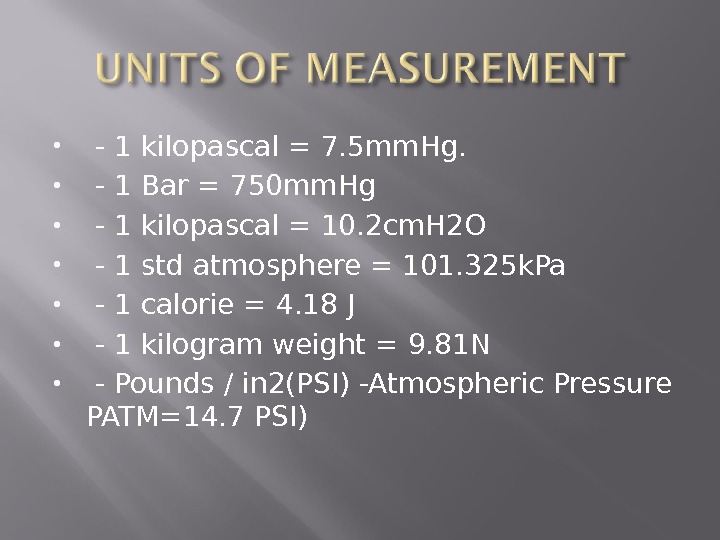

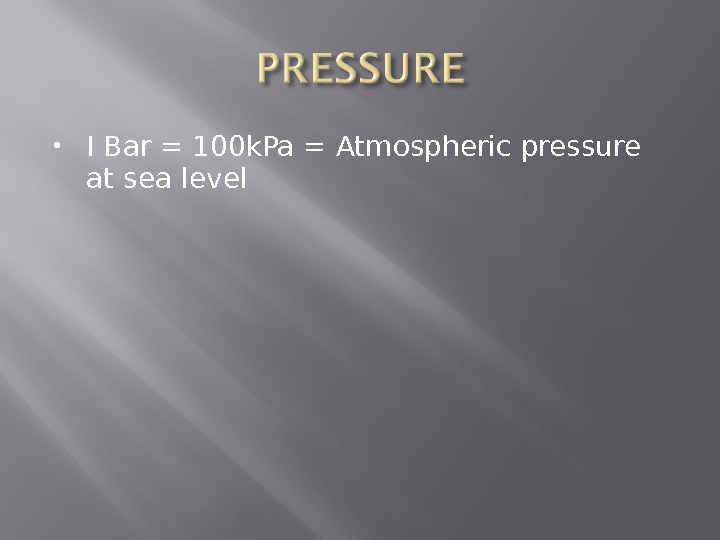



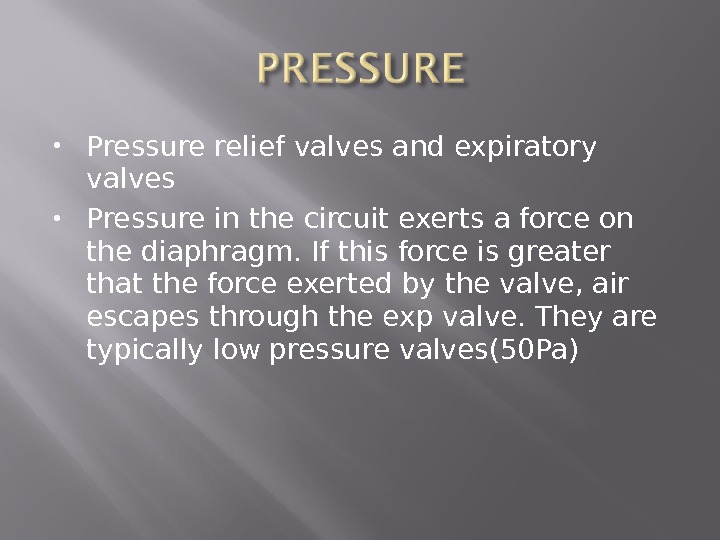


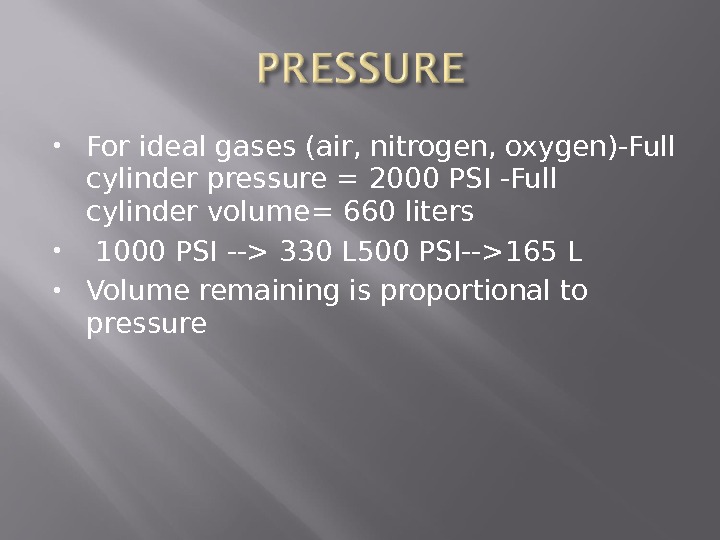

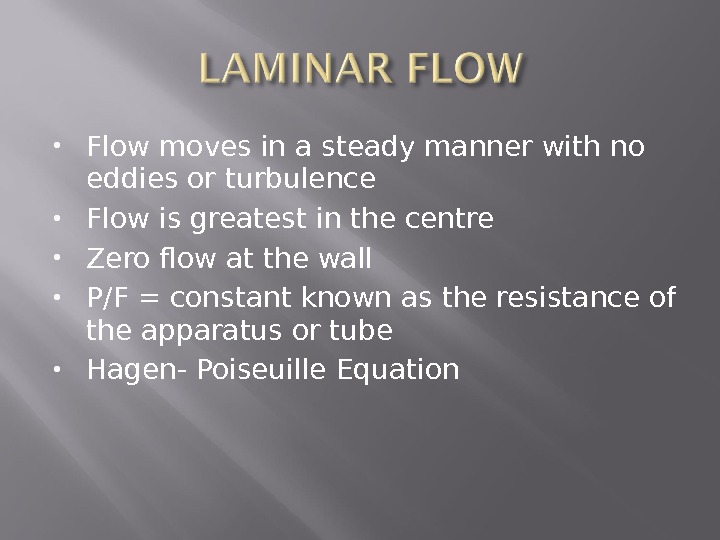
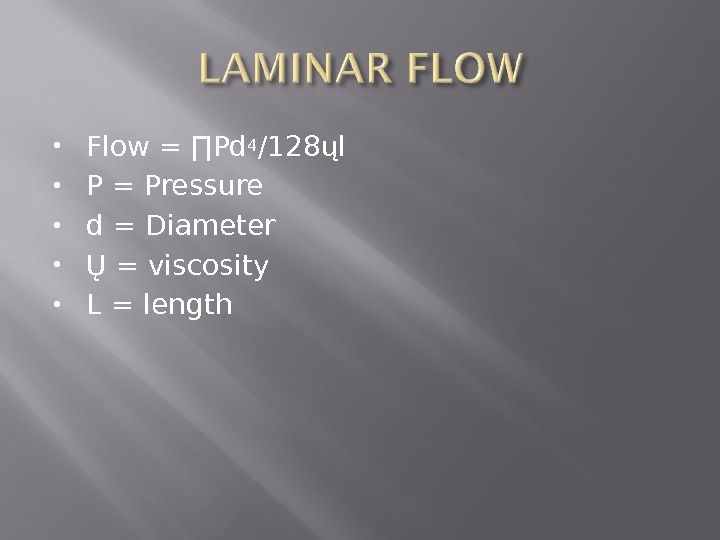
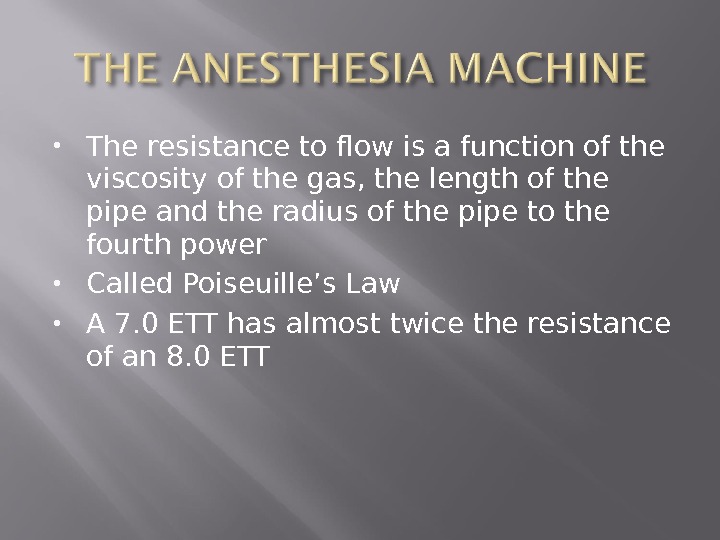
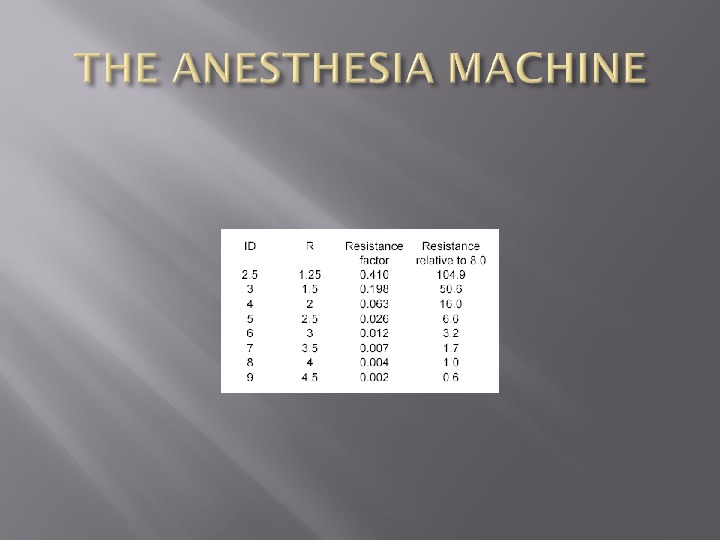
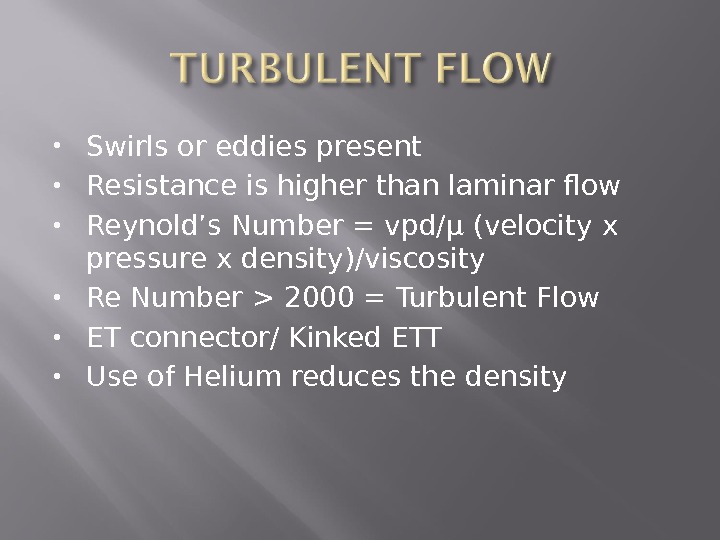


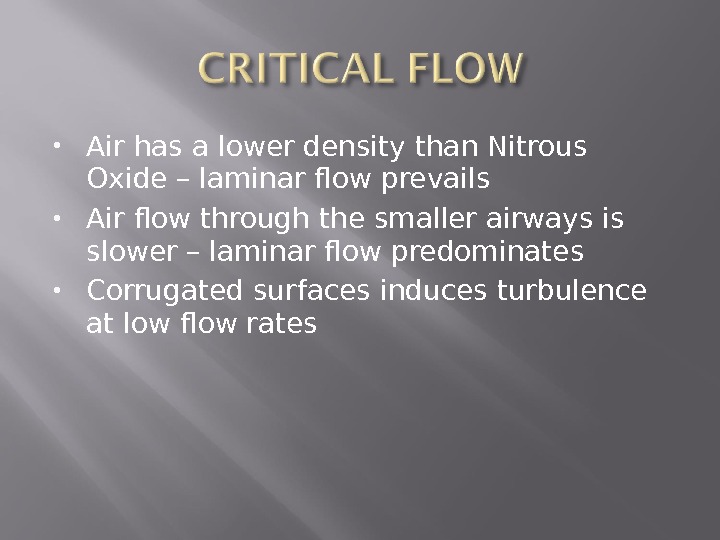




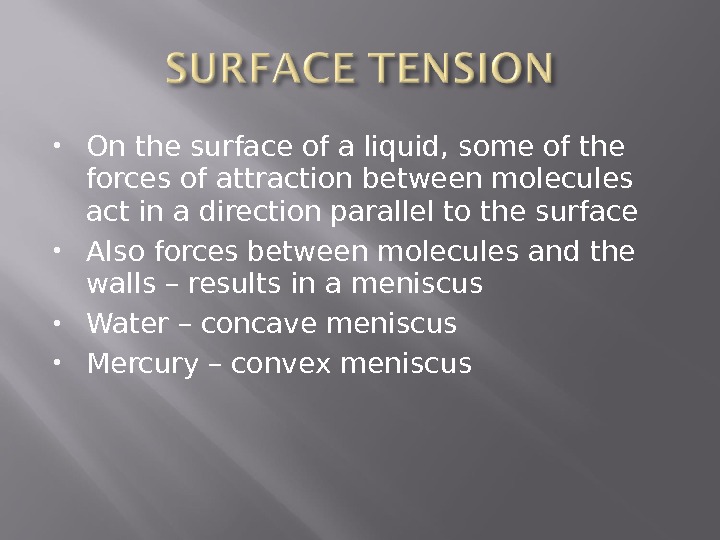
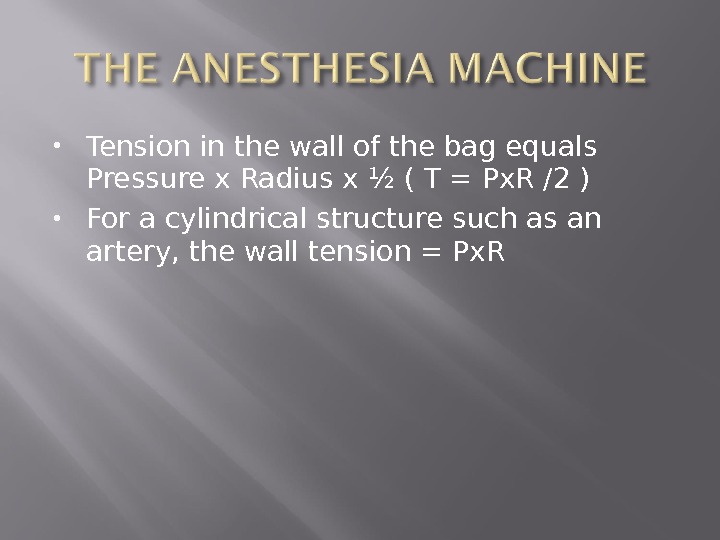

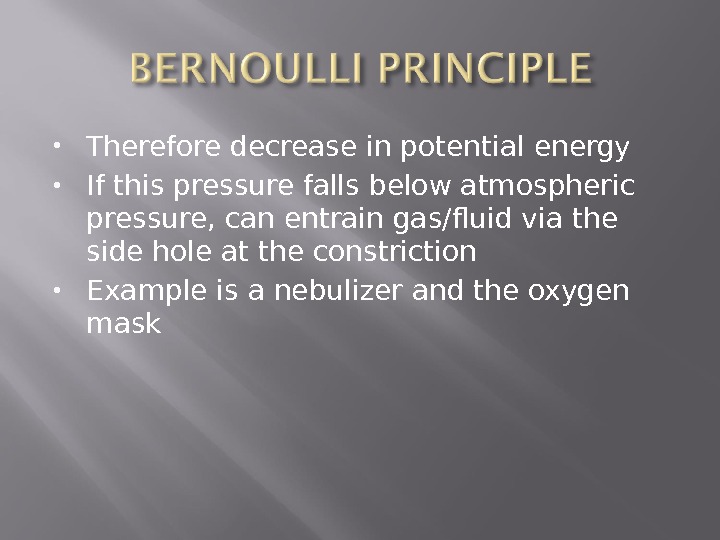


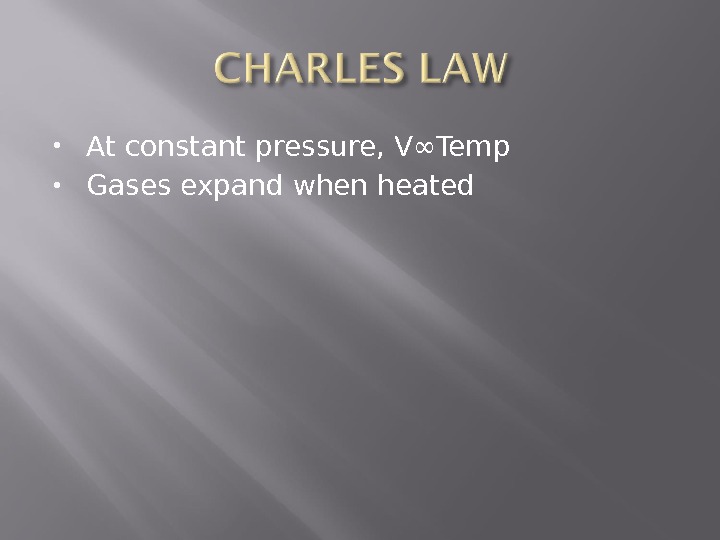
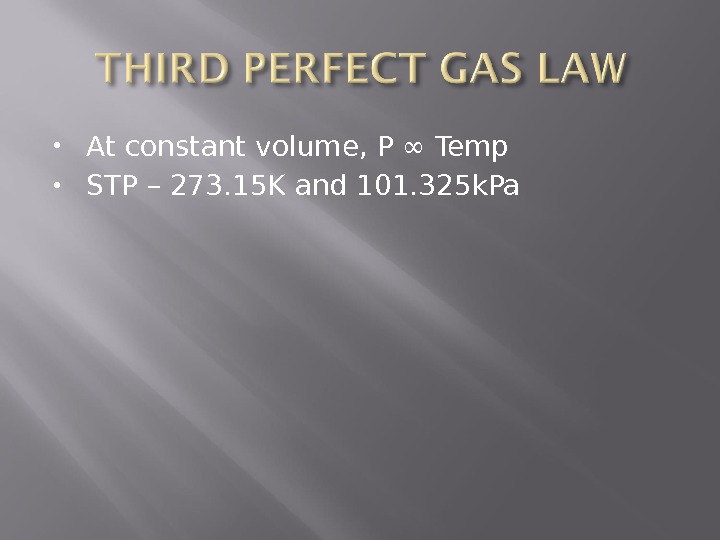

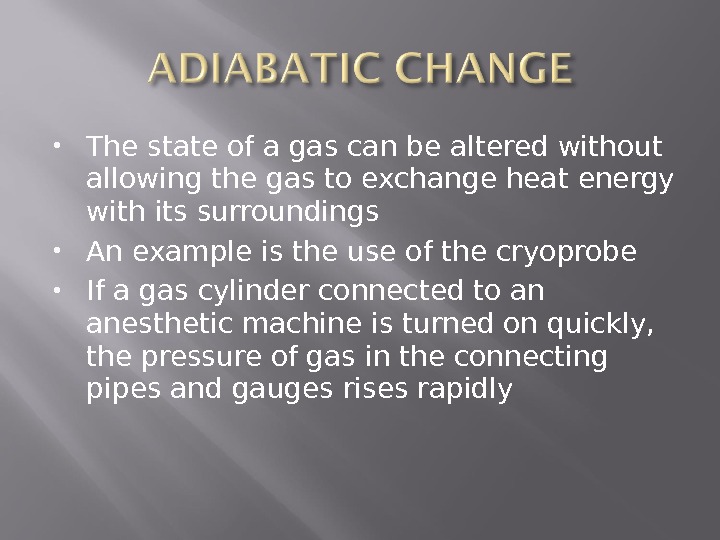
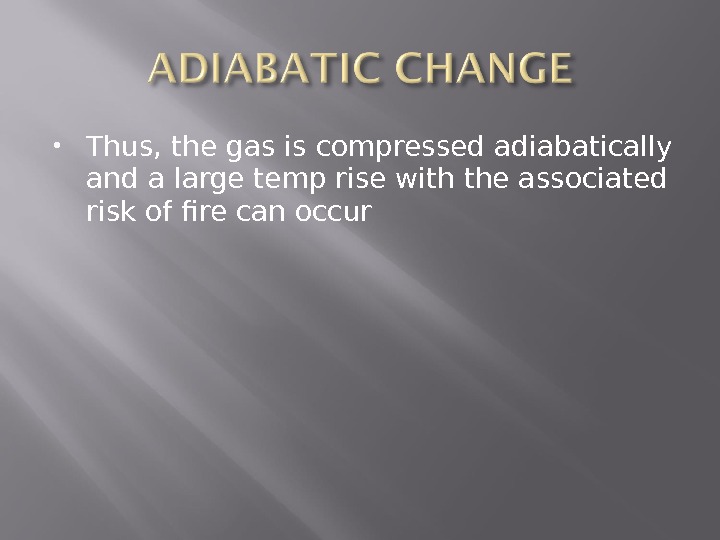
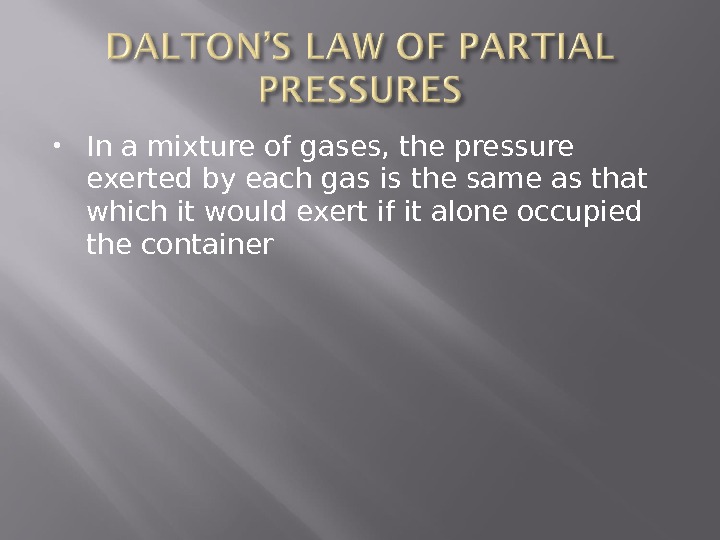

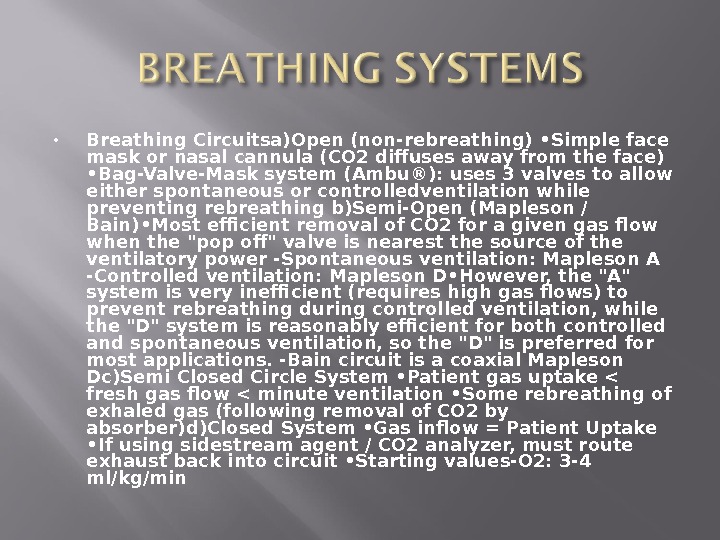
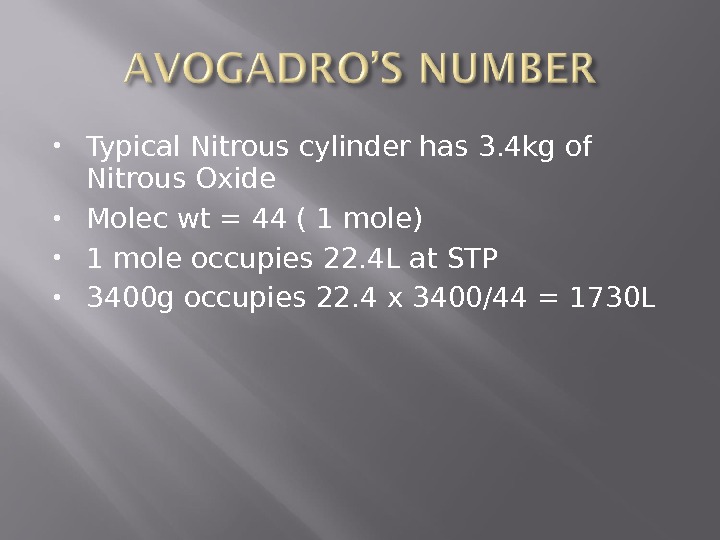

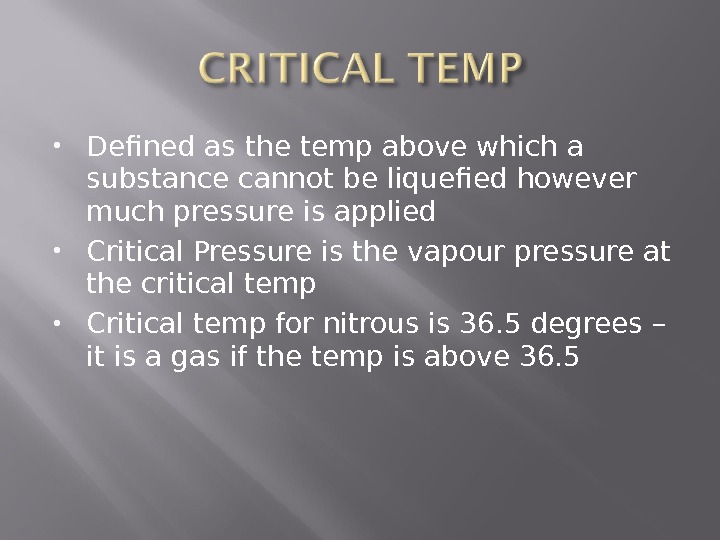


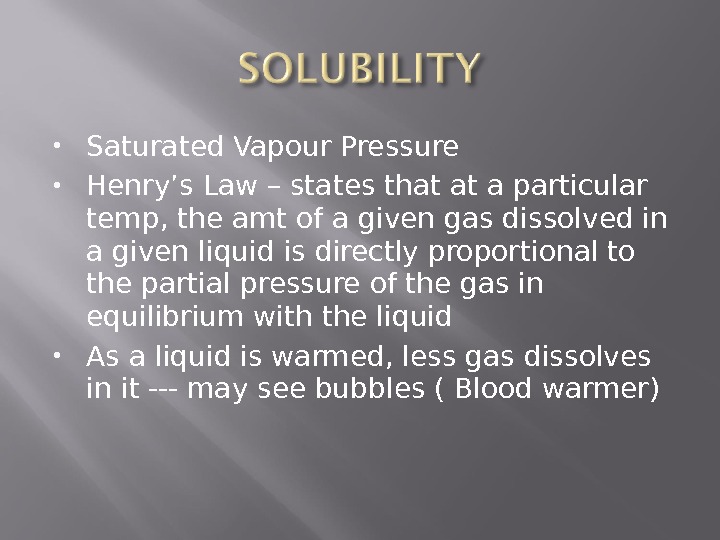
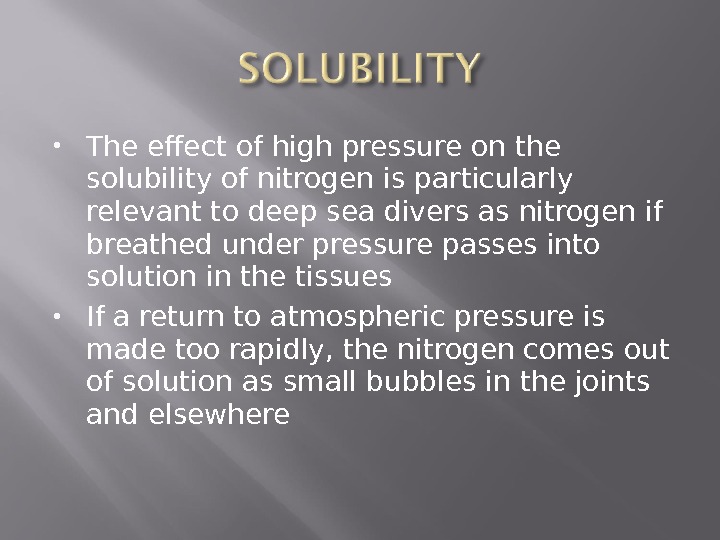

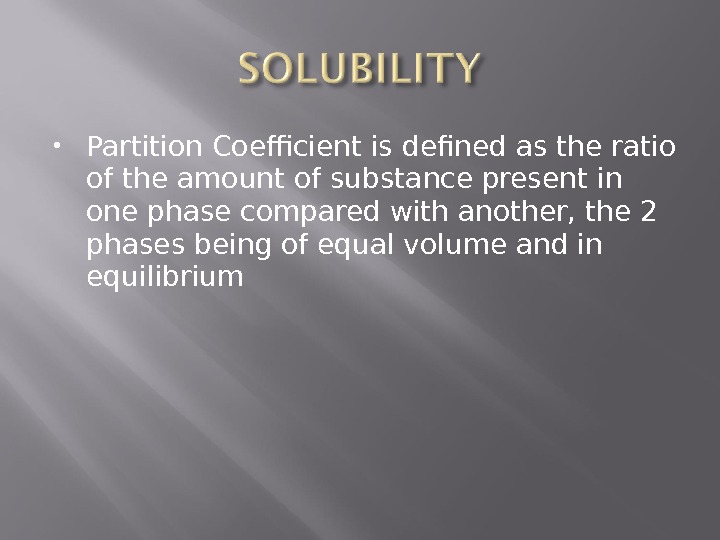


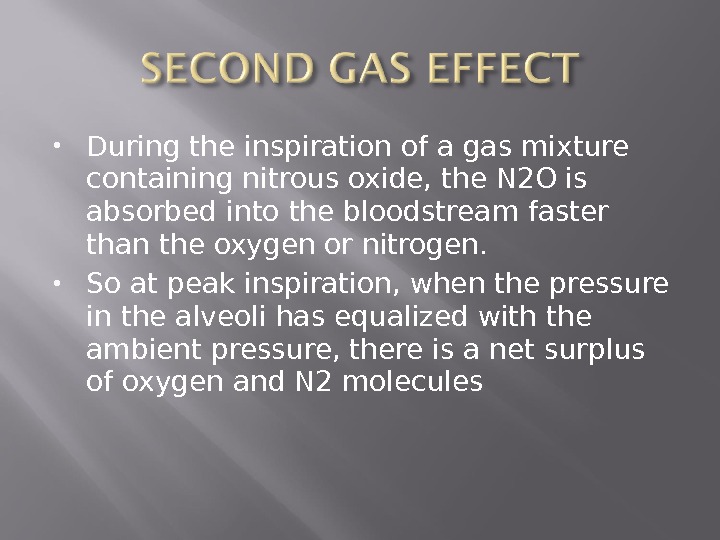







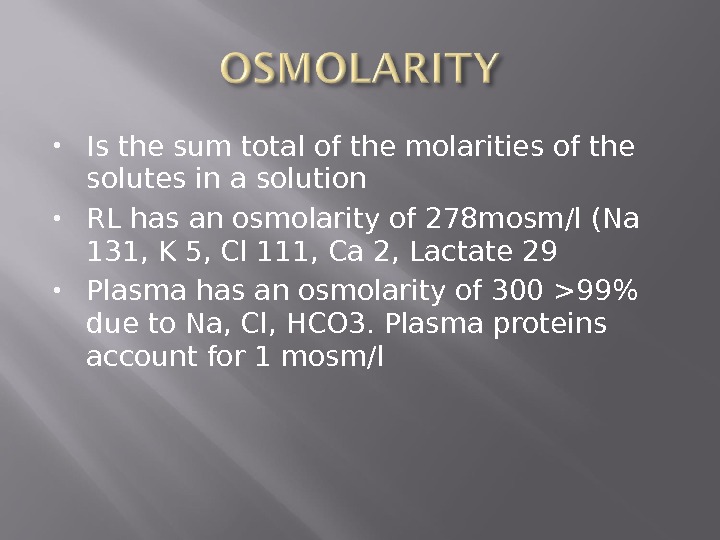
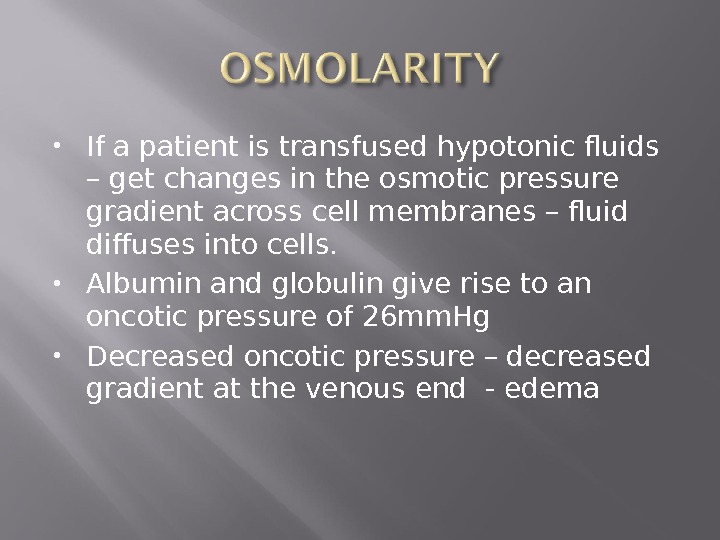

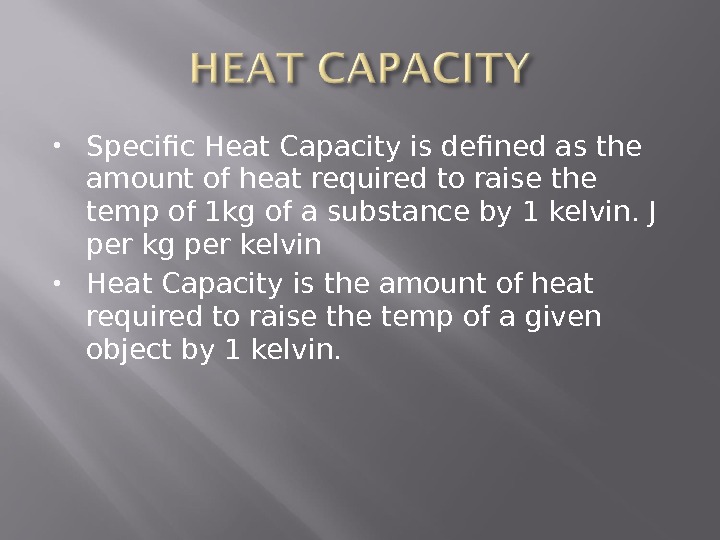

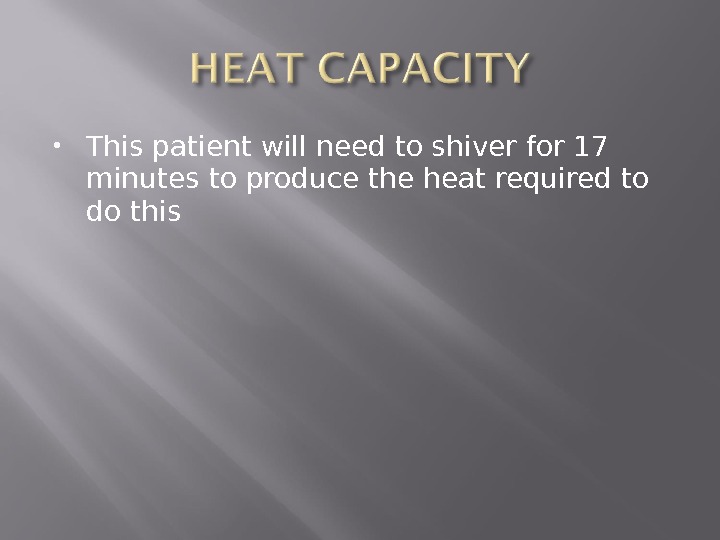

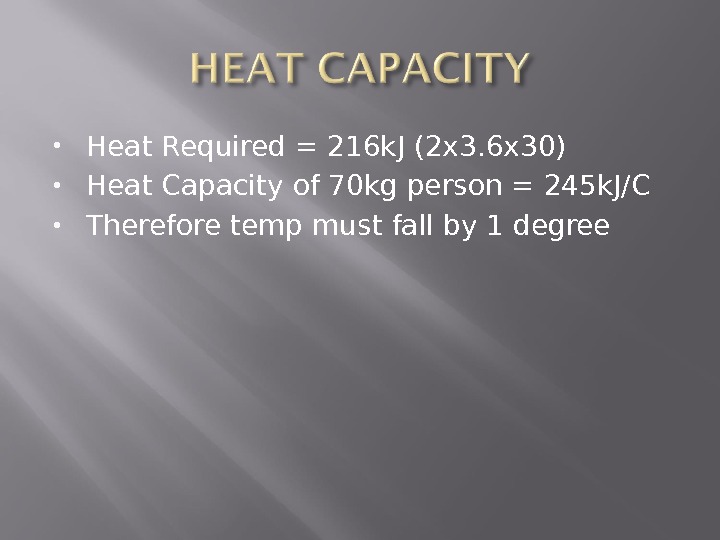
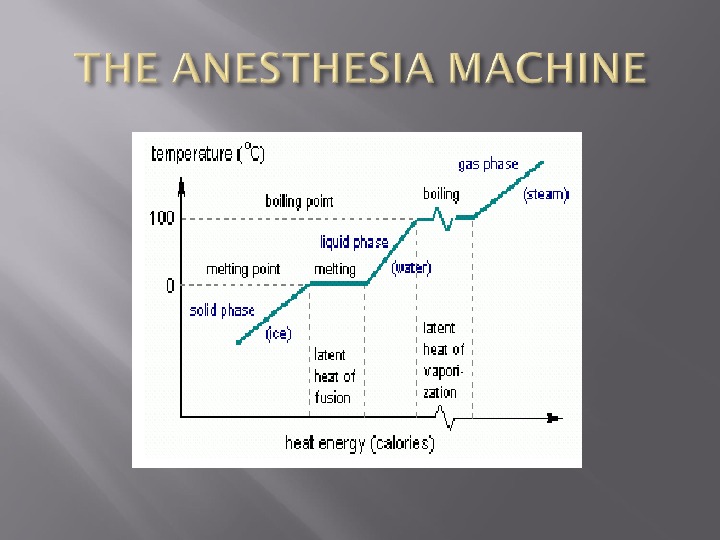

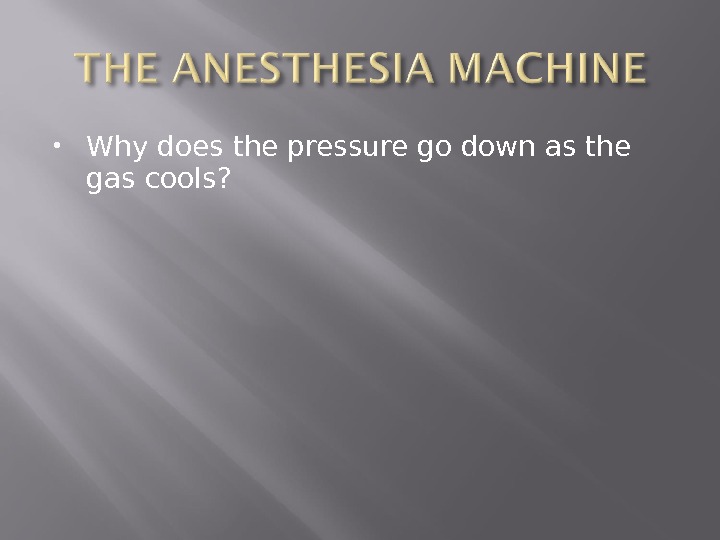


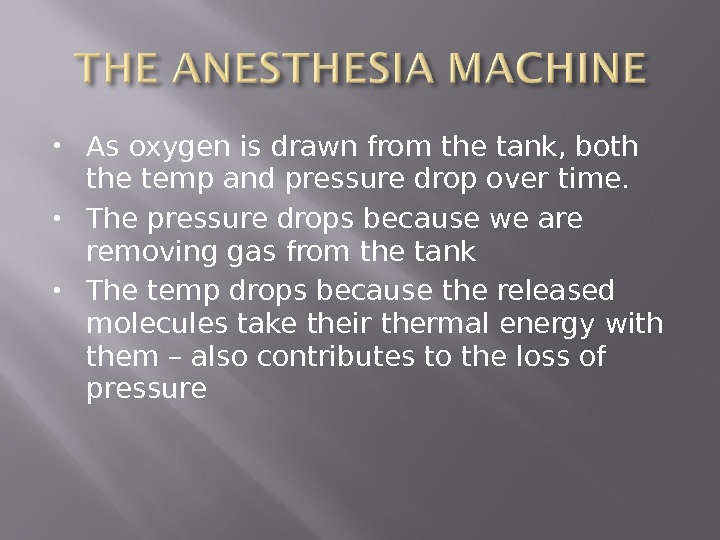
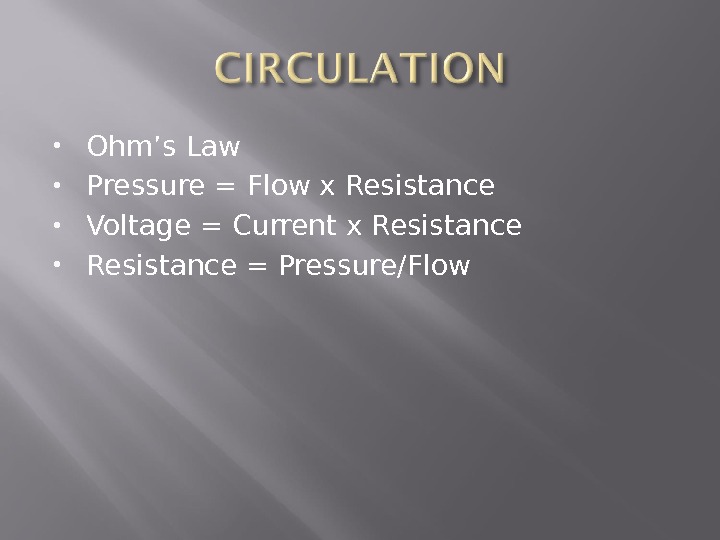


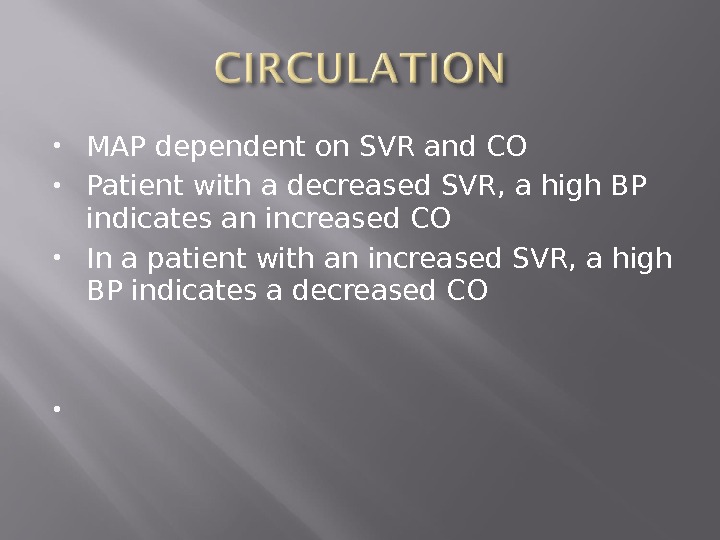







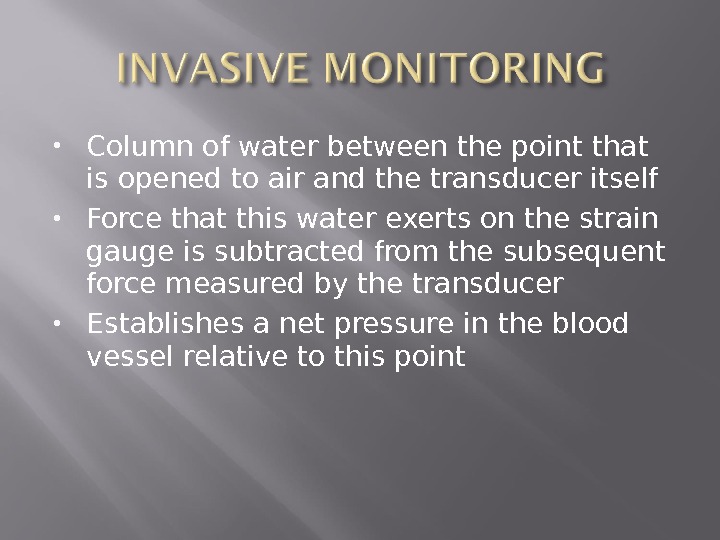
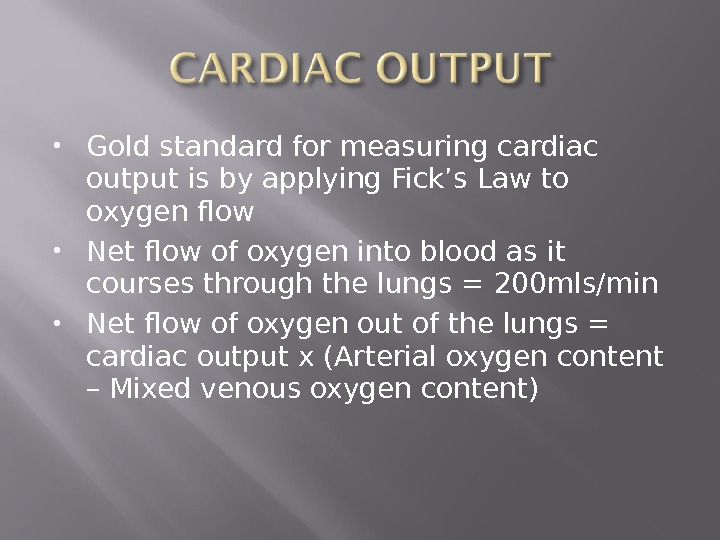
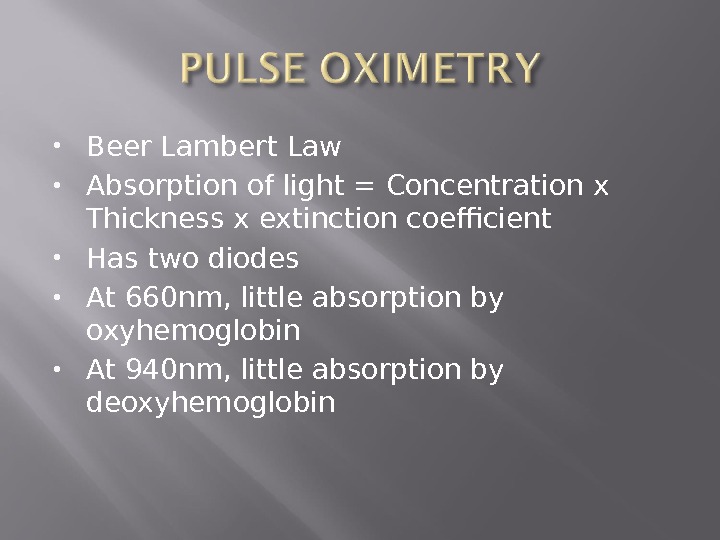



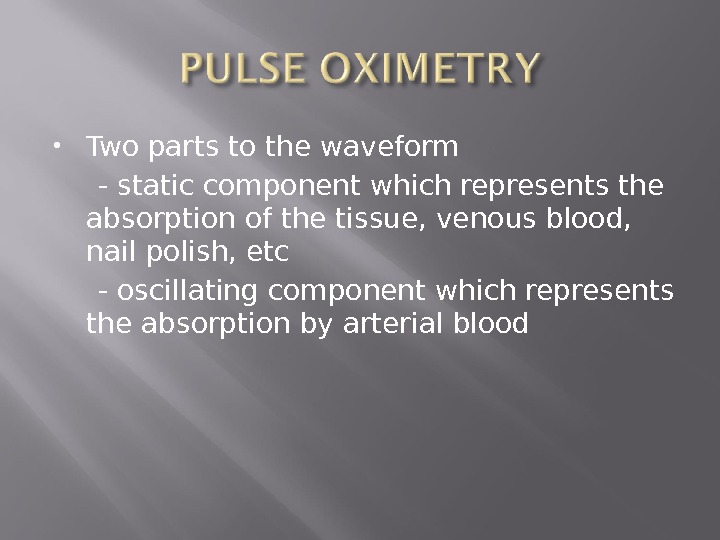

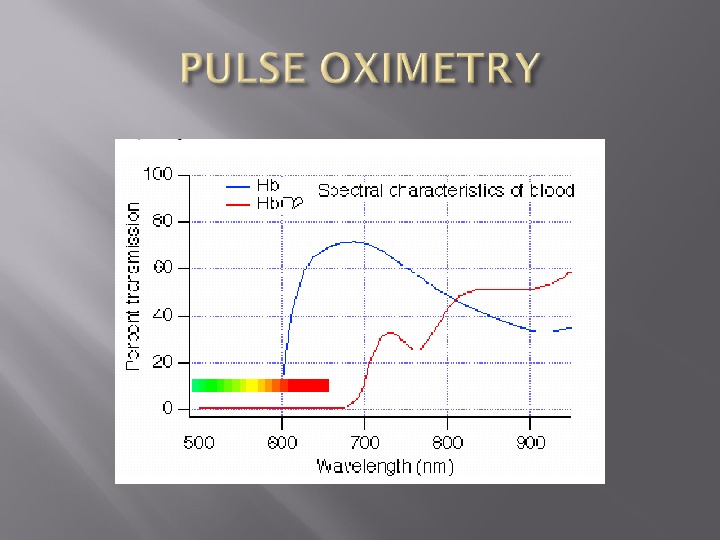
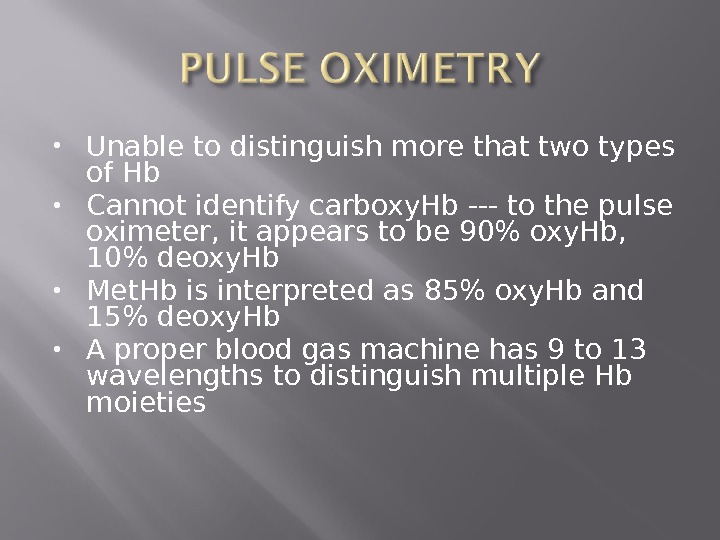
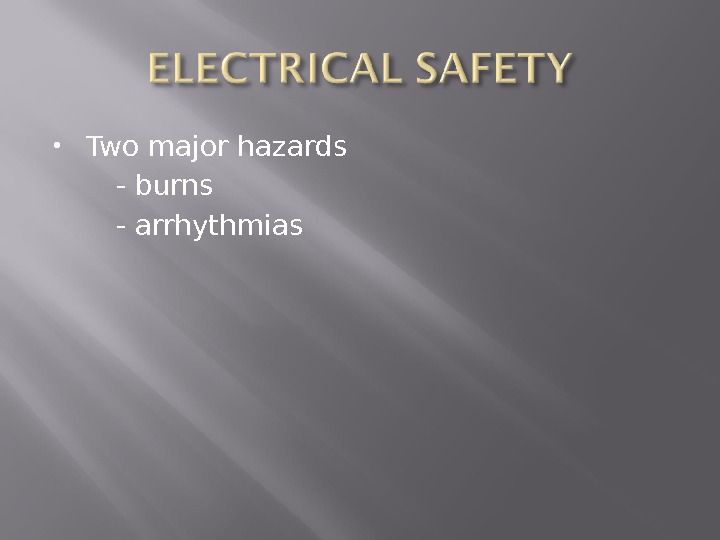
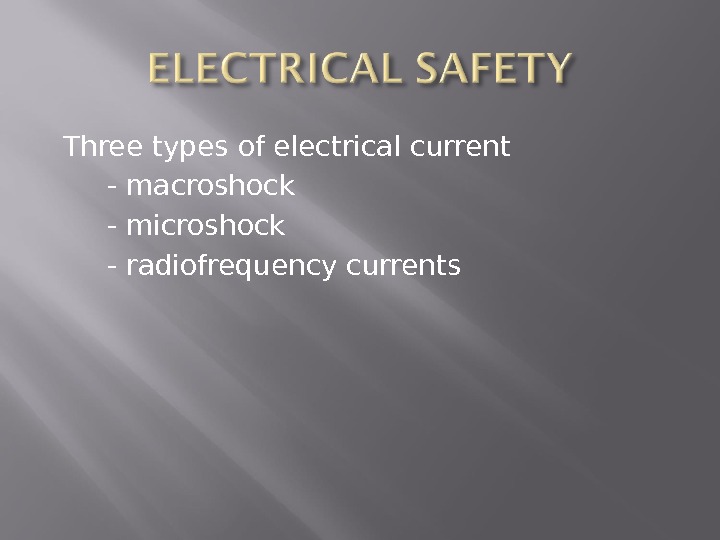



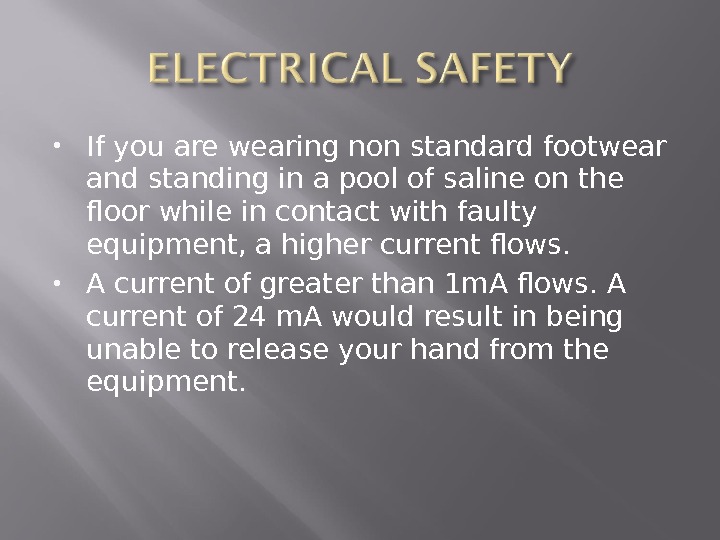
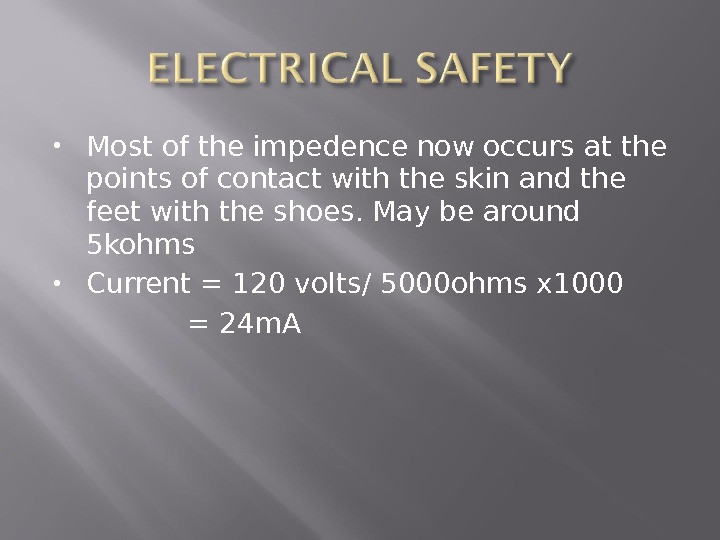

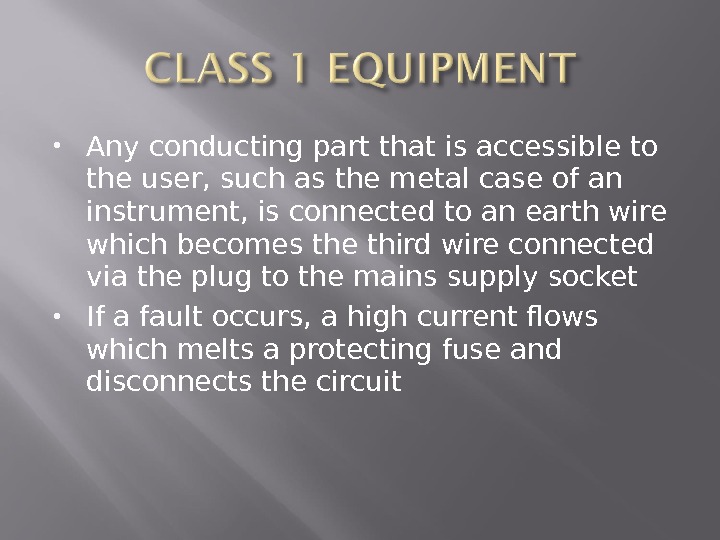


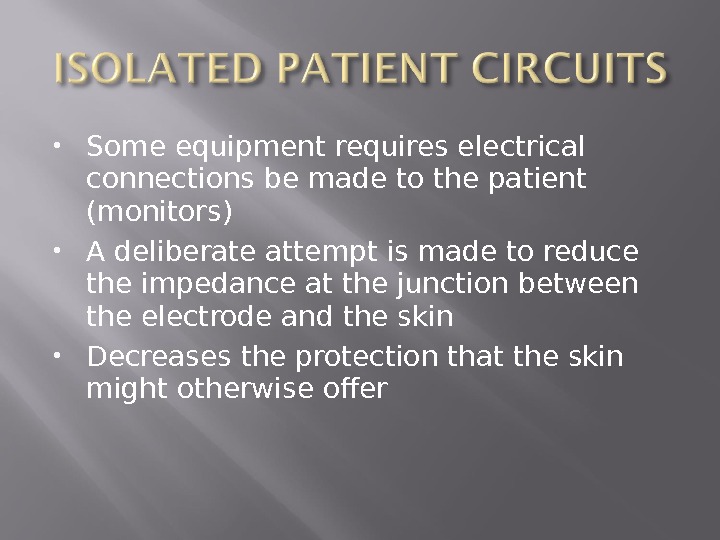

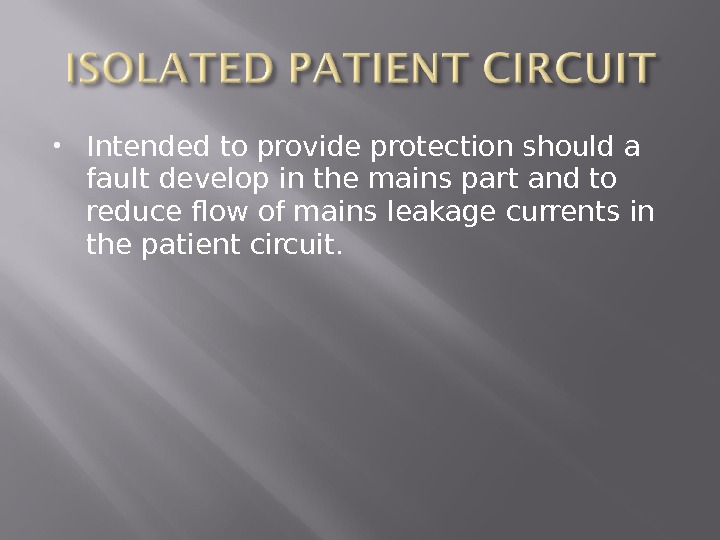
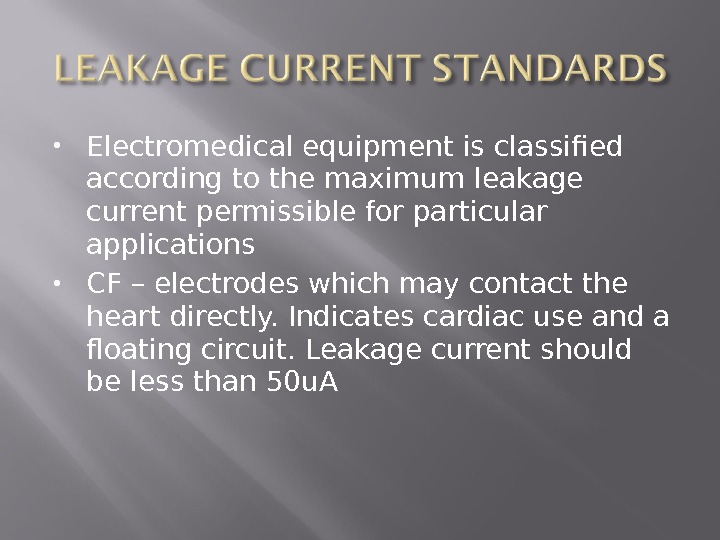


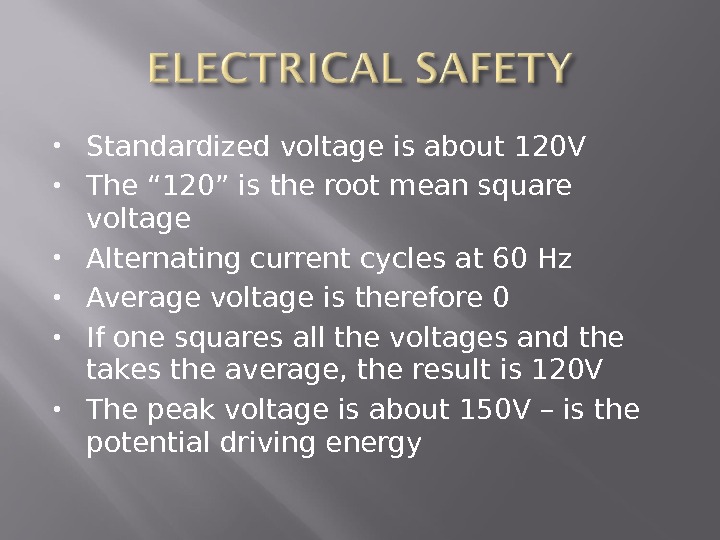
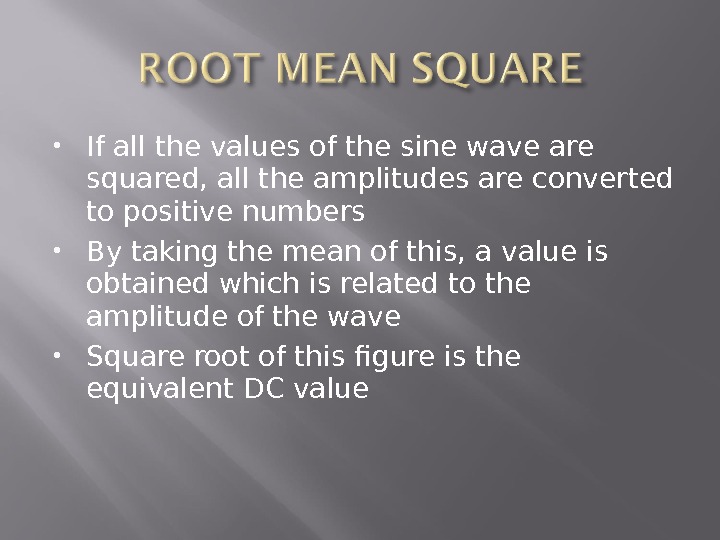
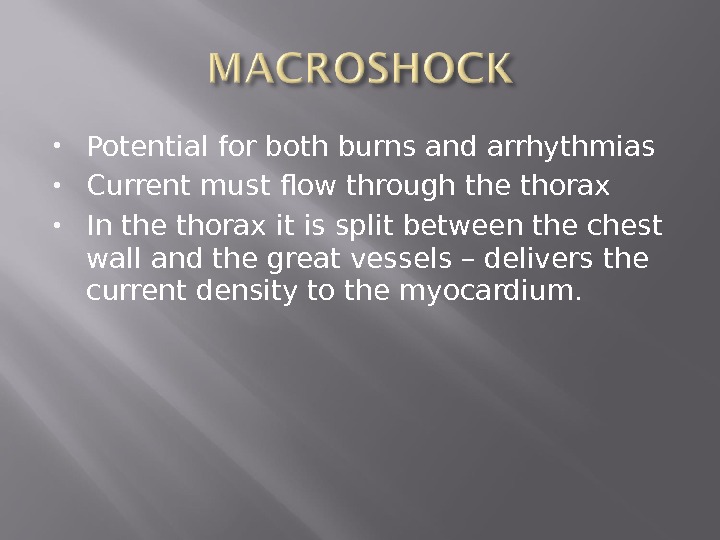
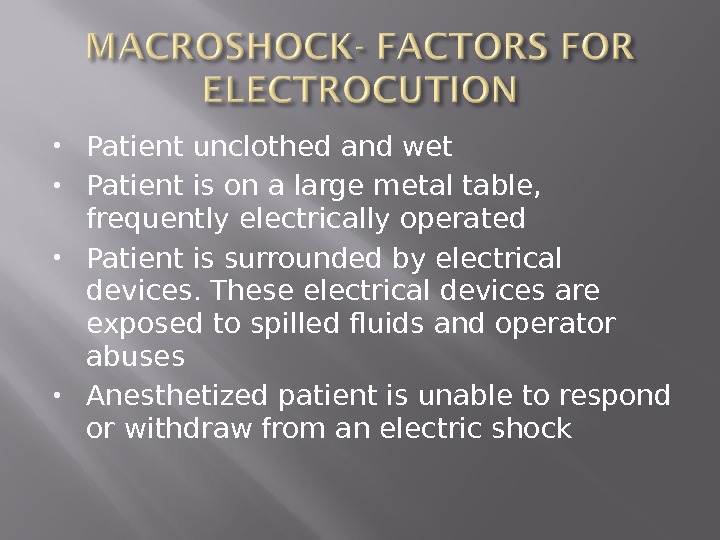

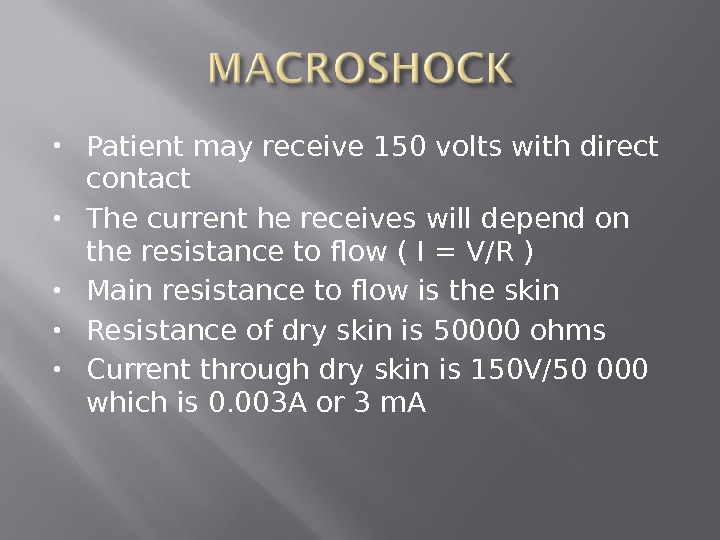






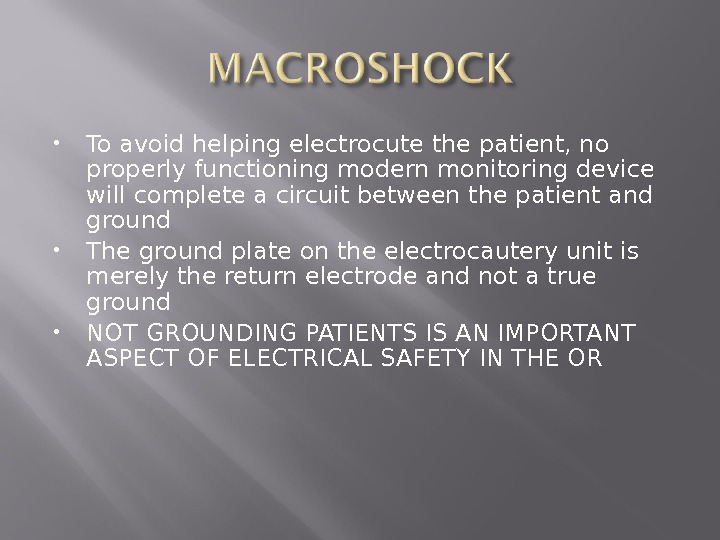
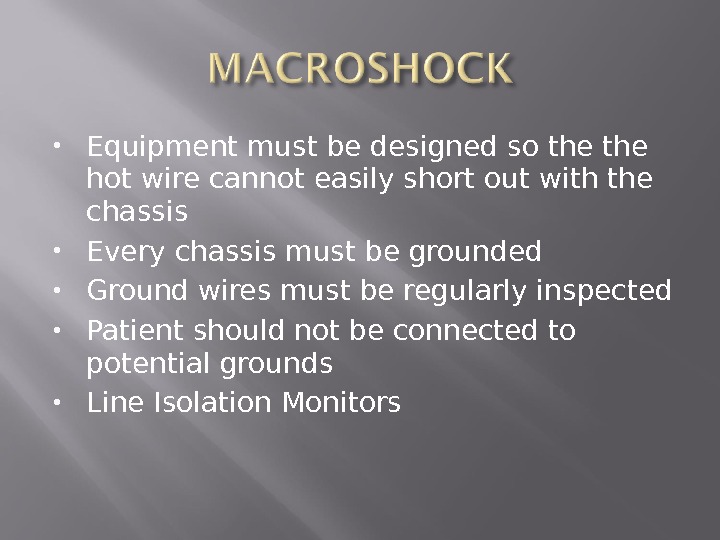
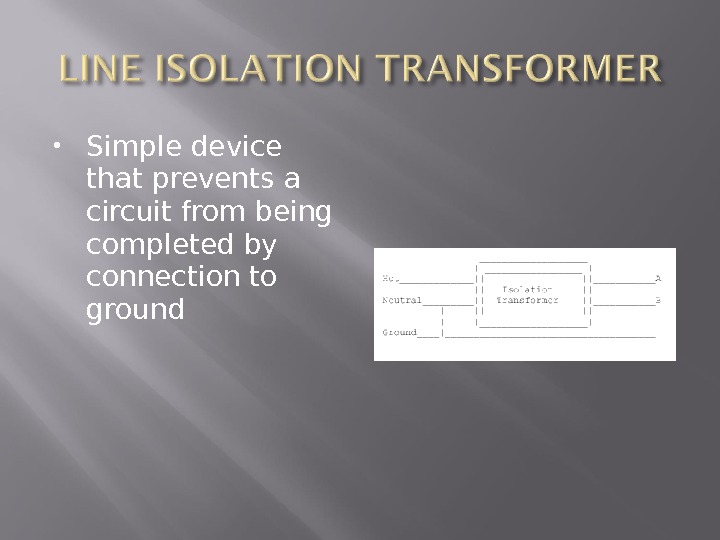
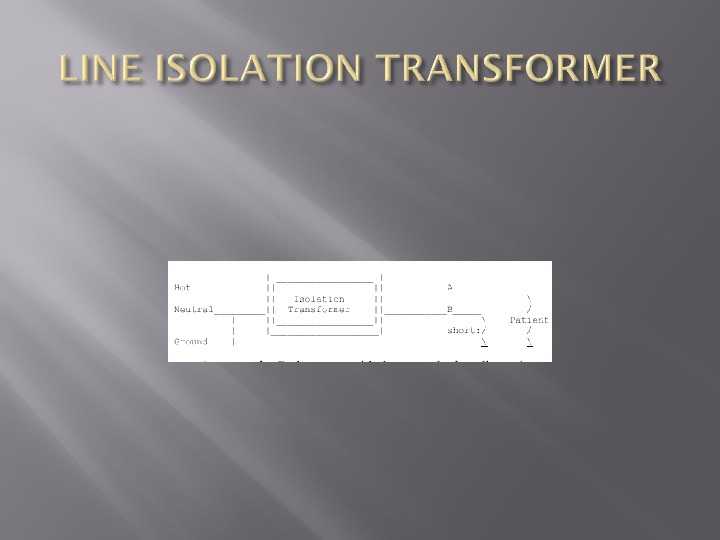
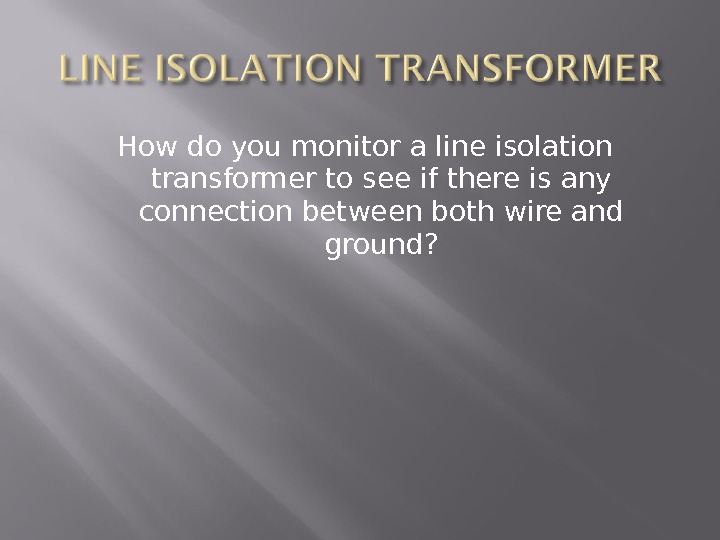
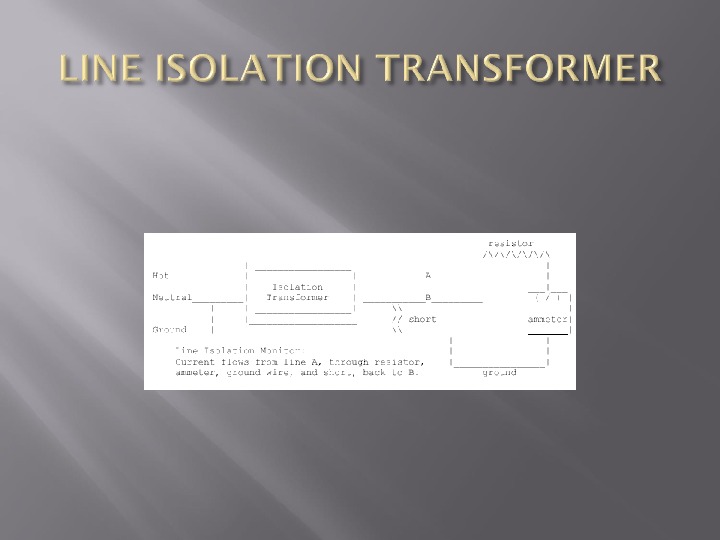

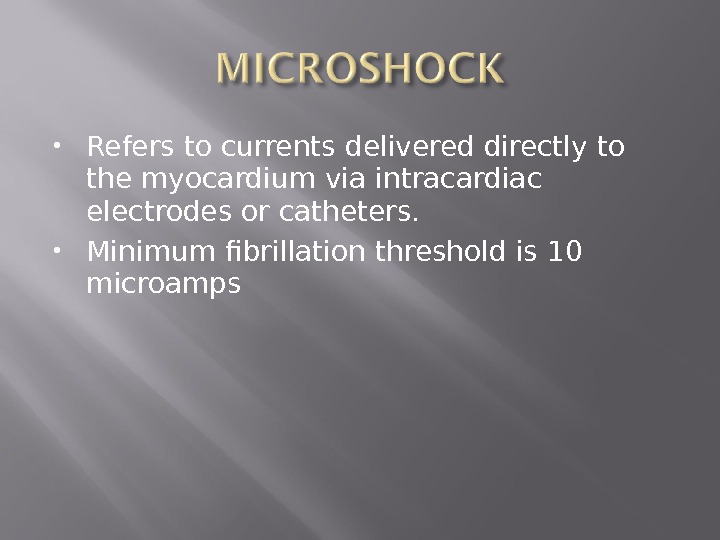

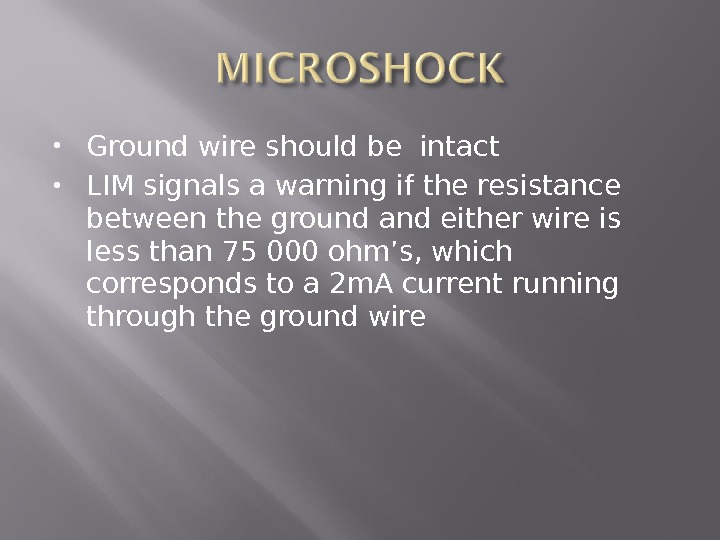
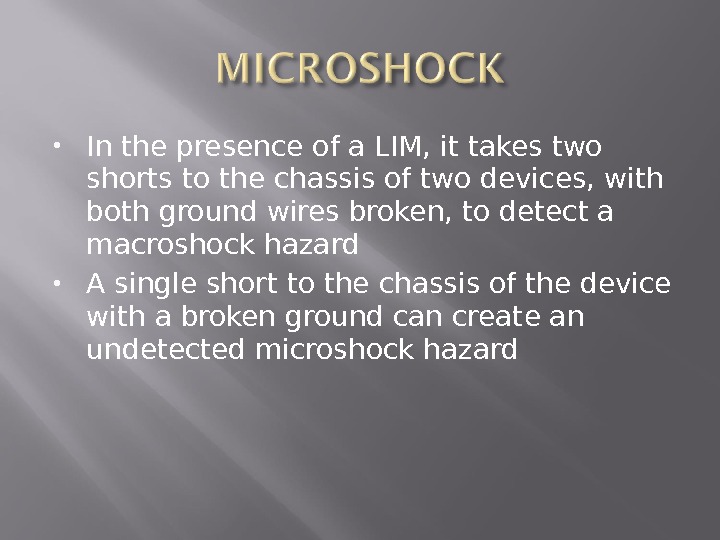

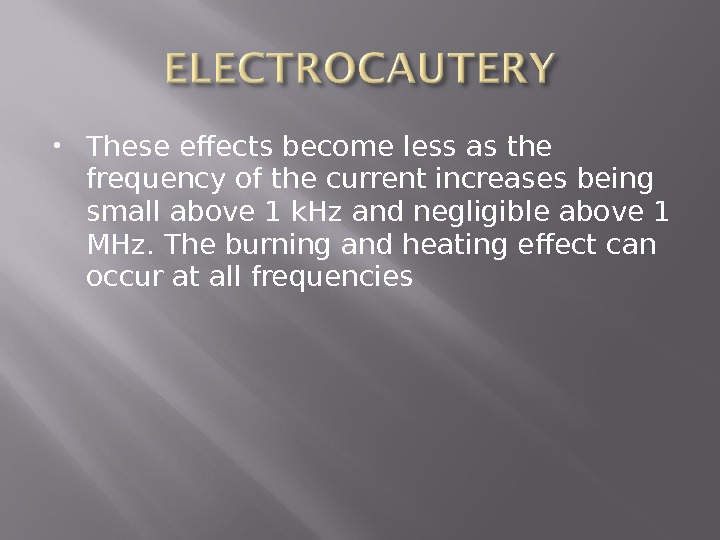



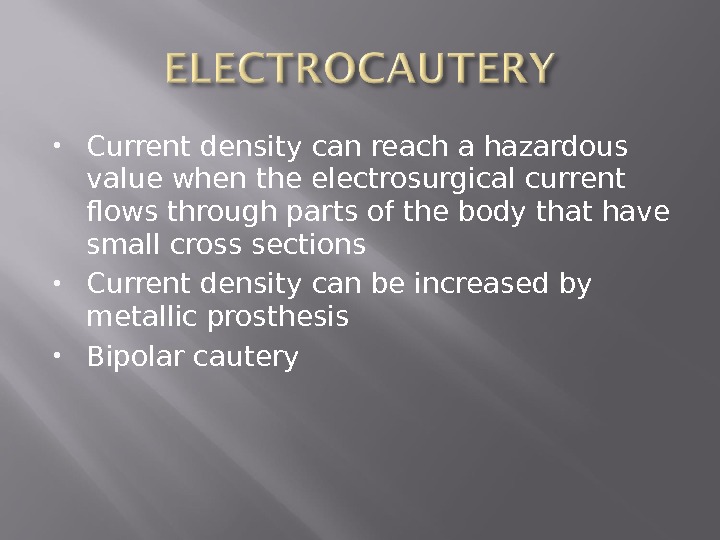


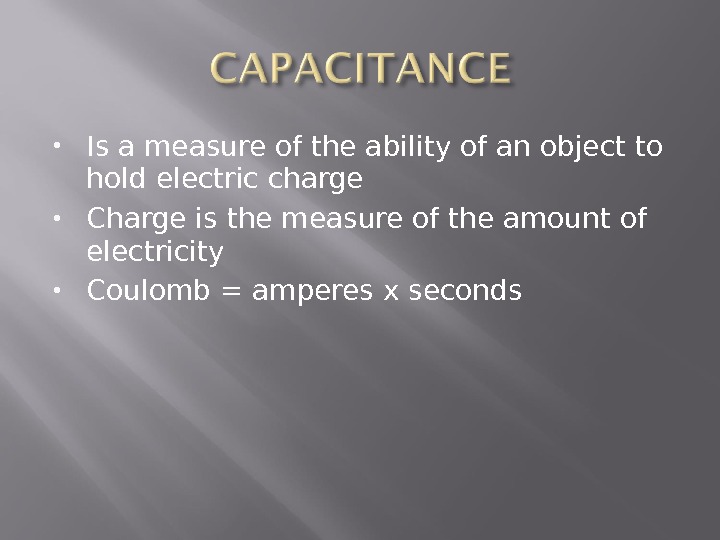
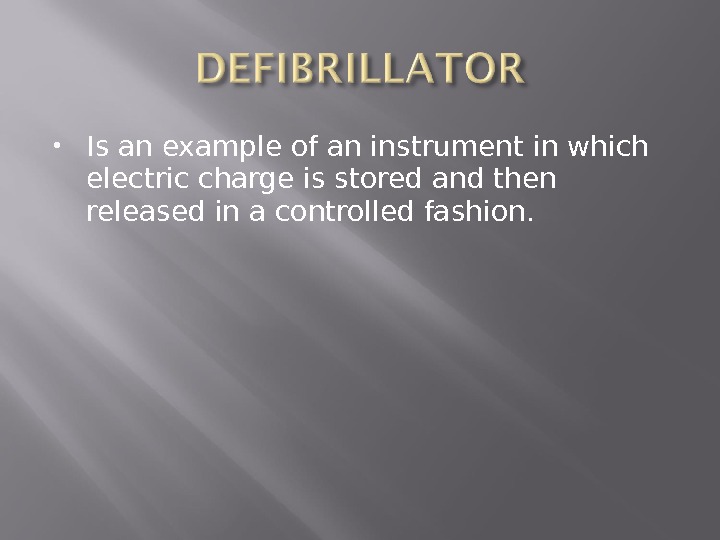

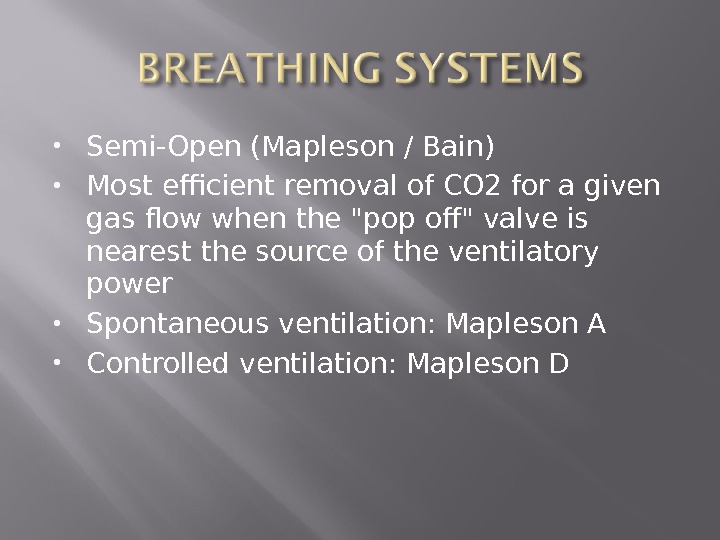


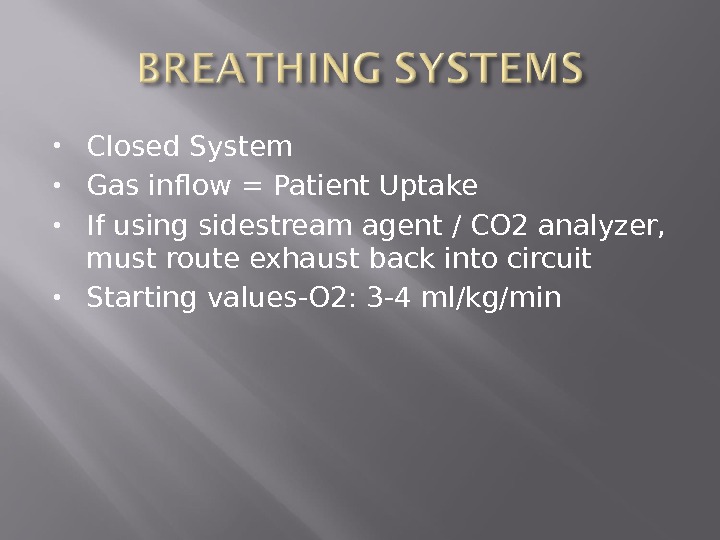


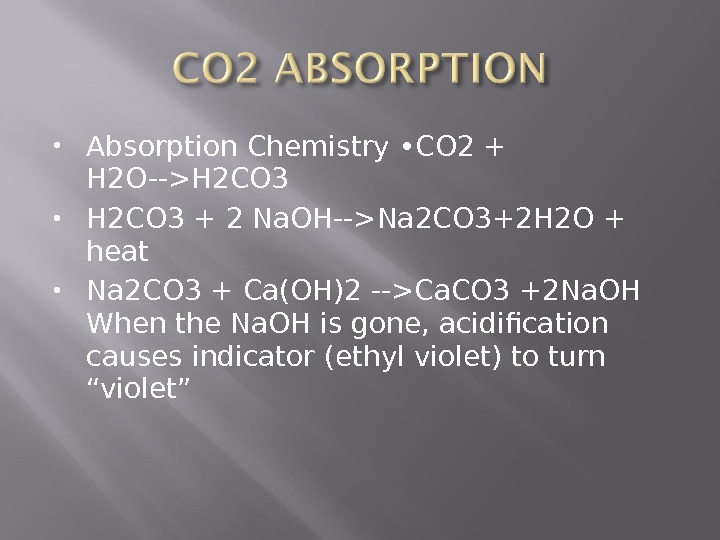
- Размер: 5.6 Mегабайта
- Количество слайдов: 155
Описание презентации D-R Kazarin Peter For the safe по слайдам
 D-R Kazarin Peter
D-R Kazarin Peter
 For the safe & efficient use of anaesthetic apparatus, the anaesthetist must have a clear concept of the physical aspects of the equipment in use. Understanding of basic concepts may avert unnecessary accidents & near misses.
For the safe & efficient use of anaesthetic apparatus, the anaesthetist must have a clear concept of the physical aspects of the equipment in use. Understanding of basic concepts may avert unnecessary accidents & near misses.
 Physics is the world in measurable terms and the physical laws apply to all states of matter (i. e. solids, liquids and gases). As anaesthesiolgists we deal with liquids & gases under pressure at varying temperatures and volumes. These inter-relationships are simple, measurable and their understanding ensures a safe outcome for the patient.
Physics is the world in measurable terms and the physical laws apply to all states of matter (i. e. solids, liquids and gases). As anaesthesiolgists we deal with liquids & gases under pressure at varying temperatures and volumes. These inter-relationships are simple, measurable and their understanding ensures a safe outcome for the patient.
 Base SI units — length (meter) — mass (kilogram) — time (second) — current (ampere) — temp (kelvin) — luminous intensity (candela) — amount of substance (mole)
Base SI units — length (meter) — mass (kilogram) — time (second) — current (ampere) — temp (kelvin) — luminous intensity (candela) — amount of substance (mole)
 DERIVED UNITS — temp in degrees celcius — force (newton) — pressure (pascal) — pressure (bar) — energy (electron volt) — power (watt) — frequency (hertz) — volume ( liter)
DERIVED UNITS — temp in degrees celcius — force (newton) — pressure (pascal) — pressure (bar) — energy (electron volt) — power (watt) — frequency (hertz) — volume ( liter)
 UNITS NOT IN THE SI SYSTEM — pressure (mm. Hg) — pressure (cmh 2 o) — pressure (std atmosphere) — energy (calorie) — force (kilogram weight)
UNITS NOT IN THE SI SYSTEM — pressure (mm. Hg) — pressure (cmh 2 o) — pressure (std atmosphere) — energy (calorie) — force (kilogram weight)
 — 1 kilopascal = 7. 5 mm. Hg. — 1 Bar = 750 mm. Hg — 1 kilopascal = 10. 2 cm. H 2 O — 1 std atmosphere = 101. 325 k. Pa — 1 calorie = 4. 18 J — 1 kilogram weight = 9. 81 N — Pounds / in 2(PSI) -Atmospheric Pressure PATM=14. 7 PSI)
— 1 kilopascal = 7. 5 mm. Hg. — 1 Bar = 750 mm. Hg — 1 kilopascal = 10. 2 cm. H 2 O — 1 std atmosphere = 101. 325 k. Pa — 1 calorie = 4. 18 J — 1 kilogram weight = 9. 81 N — Pounds / in 2(PSI) -Atmospheric Pressure PATM=14. 7 PSI)
 Force = mass x acceleration = kgms -2 = Newton Pressure = Force/Area 1 Pascal = I Newton acting over 1 m
Force = mass x acceleration = kgms -2 = Newton Pressure = Force/Area 1 Pascal = I Newton acting over 1 m
 I Bar = 100 k. Pa = Atmospheric pressure at sea level
I Bar = 100 k. Pa = Atmospheric pressure at sea level
 Normal thumb pressure on a syringe = 25 N 2 ml syringe has an area of 5 x 10 -5 Pressure is 500 k. Pa – extravascular infusion easy
Normal thumb pressure on a syringe = 25 N 2 ml syringe has an area of 5 x 10 -5 Pressure is 500 k. Pa – extravascular infusion easy
 With a 20 ml syringe, the pressure exerted is 100 k. PA = 6 X SBP of 120 mm. Hg (16 Kpa) IVRA – rapid injection – pressure can exceed SBP or cuff pressure – decreased protection
With a 20 ml syringe, the pressure exerted is 100 k. PA = 6 X SBP of 120 mm. Hg (16 Kpa) IVRA – rapid injection – pressure can exceed SBP or cuff pressure – decreased protection
 Bed Sores — 20 kg of patient mass supported on an area of contact of 100 cm 2 Force = 196 N ( 20 kg x 9. 81 ) Pressure = 19. 6 k. Pa Normal SBP = 16 k. Pa — Risk of Ischemia
Bed Sores — 20 kg of patient mass supported on an area of contact of 100 cm 2 Force = 196 N ( 20 kg x 9. 81 ) Pressure = 19. 6 k. Pa Normal SBP = 16 k. Pa — Risk of Ischemia
 Pressure relief valves and expiratory valves Pressure in the circuit exerts a force on the diaphragm. If this force is greater that the force exerted by the valve, air escapes through the exp valve. They are typically low pressure valves(50 Pa)
Pressure relief valves and expiratory valves Pressure in the circuit exerts a force on the diaphragm. If this force is greater that the force exerted by the valve, air escapes through the exp valve. They are typically low pressure valves(50 Pa)
 Full oxygen cylinder has a gauge pressure of 137 bar Empty cylinder still has oxygen at atmospheric pressure Absolute Pressure = 138 bar
Full oxygen cylinder has a gauge pressure of 137 bar Empty cylinder still has oxygen at atmospheric pressure Absolute Pressure = 138 bar
 Absolute P = Gauge P + Atmospheric P Most times we ignore atmospheric P Thus, ventilator pressures, gas cylinder pressures and arterial blood pressures are all gauge pressures
Absolute P = Gauge P + Atmospheric P Most times we ignore atmospheric P Thus, ventilator pressures, gas cylinder pressures and arterial blood pressures are all gauge pressures
 For ideal gases (air, nitrogen, oxygen)-Full cylinder pressure = 2000 PSI -Full cylinder volume= 660 liters 1000 PSI —> 330 L 500 PSI—>165 L Volume remaining is proportional to pressure
For ideal gases (air, nitrogen, oxygen)-Full cylinder pressure = 2000 PSI -Full cylinder volume= 660 liters 1000 PSI —> 330 L 500 PSI—>165 L Volume remaining is proportional to pressure
 Flow = quantity of fluid/gas passing a point in unit time Can be turbulent or laminar
Flow = quantity of fluid/gas passing a point in unit time Can be turbulent or laminar
 Flow moves in a steady manner with no eddies or turbulence Flow is greatest in the centre Zero flow at the wall P/F = constant known as the resistance of the apparatus or tube Hagen- Poiseuille Equation
Flow moves in a steady manner with no eddies or turbulence Flow is greatest in the centre Zero flow at the wall P/F = constant known as the resistance of the apparatus or tube Hagen- Poiseuille Equation
 Flow = ∏Pd 4 /128ųl P = Pressure d = Diameter Ų = viscosity L = length
Flow = ∏Pd 4 /128ųl P = Pressure d = Diameter Ų = viscosity L = length
 The resistance to flow is a function of the viscosity of the gas, the length of the pipe and the radius of the pipe to the fourth power Called Poiseuille’s Law A 7. 0 ETT has almost twice the resistance of an 8. 0 ETT
The resistance to flow is a function of the viscosity of the gas, the length of the pipe and the radius of the pipe to the fourth power Called Poiseuille’s Law A 7. 0 ETT has almost twice the resistance of an 8. 0 ETT

 Swirls or eddies present Resistance is higher than laminar flow Reynold’s Number = vpd/µ (velocity x pressure x density)/viscosity Re Number > 2000 = Turbulent Flow ET connector/ Kinked ETT Use of Helium reduces the density
Swirls or eddies present Resistance is higher than laminar flow Reynold’s Number = vpd/µ (velocity x pressure x density)/viscosity Re Number > 2000 = Turbulent Flow ET connector/ Kinked ETT Use of Helium reduces the density
 Most important property is density which is mass/volume
Most important property is density which is mass/volume
 Critical flow for a typical anesthetic gas has approx the same numerical value as the diameter of the airway concerned 9 mm ETT has a critical flow of 9 L/min Above 9 L/min = turbulent flow
Critical flow for a typical anesthetic gas has approx the same numerical value as the diameter of the airway concerned 9 mm ETT has a critical flow of 9 L/min Above 9 L/min = turbulent flow
 Air has a lower density than Nitrous Oxide – laminar flow prevails Air flow through the smaller airways is slower – laminar flow predominates Corrugated surfaces induces turbulence at low flow rates
Air has a lower density than Nitrous Oxide – laminar flow prevails Air flow through the smaller airways is slower – laminar flow predominates Corrugated surfaces induces turbulence at low flow rates
 Although the bronchi and smaller air passages are narrower than the trachea, the air flow through them is slower. Laminar flow is usual in the LRT
Although the bronchi and smaller air passages are narrower than the trachea, the air flow through them is slower. Laminar flow is usual in the LRT
 Tension is a tangential force in Nm acting on a length of wall A balance must be present between the pressure caused by the smooth muscle and elastic tissue and the fluid pressure in the tube to prevent the tube progressively distending or collapsing
Tension is a tangential force in Nm acting on a length of wall A balance must be present between the pressure caused by the smooth muscle and elastic tissue and the fluid pressure in the tube to prevent the tube progressively distending or collapsing
 A fall in pressure in an arteriole tends to distend it less and so would reduce its radius but the smooth muscle in the wall maintains tension. Ratio of tension to radius is increased and pressure across the wall is raised (La Place’s law)
A fall in pressure in an arteriole tends to distend it less and so would reduce its radius but the smooth muscle in the wall maintains tension. Ratio of tension to radius is increased and pressure across the wall is raised (La Place’s law)
 Pressure = 2 T/R ( wall of a sphere) Surfactant decreases surface tension lining the alveoli – makes surface tension variable Tension decreases as the alveoli contract and increase as the alveoli distend
Pressure = 2 T/R ( wall of a sphere) Surfactant decreases surface tension lining the alveoli – makes surface tension variable Tension decreases as the alveoli contract and increase as the alveoli distend
 On the surface of a liquid, some of the forces of attraction between molecules act in a direction parallel to the surface Also forces between molecules and the walls – results in a meniscus Water – concave meniscus Mercury – convex meniscus
On the surface of a liquid, some of the forces of attraction between molecules act in a direction parallel to the surface Also forces between molecules and the walls – results in a meniscus Water – concave meniscus Mercury – convex meniscus
 Tension in the wall of the bag equals Pressure x Radius x ½ ( T = Px. R /2 ) For a cylindrical structure such as an artery, the wall tension = Px. R
Tension in the wall of the bag equals Pressure x Radius x ½ ( T = Px. R /2 ) For a cylindrical structure such as an artery, the wall tension = Px. R
 Fall in pressure at a narrowing of a tube Gas/Fluid has potential energy in the form of its pressure and kinetic energy associated with its flow At the narrowing – increase in fluid velocity – increase in kinetic energy
Fall in pressure at a narrowing of a tube Gas/Fluid has potential energy in the form of its pressure and kinetic energy associated with its flow At the narrowing – increase in fluid velocity – increase in kinetic energy
 Therefore decrease in potential energy If this pressure falls below atmospheric pressure, can entrain gas/fluid via the side hole at the constriction Example is a nebulizer and the oxygen mask
Therefore decrease in potential energy If this pressure falls below atmospheric pressure, can entrain gas/fluid via the side hole at the constriction Example is a nebulizer and the oxygen mask
 Boyles Law Charles Law Third Perfect Gas Law Dalton’s Law of Partial Pressures Universal Gas Constant
Boyles Law Charles Law Third Perfect Gas Law Dalton’s Law of Partial Pressures Universal Gas Constant
 At constant temp, V ∞ 1/P How much oxygen is available at atmospheric pressure in a tank? Internal capacity of cylinder = 10 L Absolute Pressure = 138 bar Therefore, volume = 1380 L P 1 V 1 = P 2 V 2 13800 k. Pa x 10 L = 100 k. Pa x 1380 L
At constant temp, V ∞ 1/P How much oxygen is available at atmospheric pressure in a tank? Internal capacity of cylinder = 10 L Absolute Pressure = 138 bar Therefore, volume = 1380 L P 1 V 1 = P 2 V 2 13800 k. Pa x 10 L = 100 k. Pa x 1380 L
 At constant pressure, V∞Temp Gases expand when heated
At constant pressure, V∞Temp Gases expand when heated
 At constant volume, P ∞ Temp STP – 273. 15 K and 101. 325 k. Pa
At constant volume, P ∞ Temp STP – 273. 15 K and 101. 325 k. Pa
 The three gas laws describe the behaviour of a gas when one of the three variables (pressure, temp or volume) is constant. For these conditions to apply, heat energy is required to be added or be taken from a gas The state of a gas can also be altered without allowing the gas to exchange heat energy with its surroundings
The three gas laws describe the behaviour of a gas when one of the three variables (pressure, temp or volume) is constant. For these conditions to apply, heat energy is required to be added or be taken from a gas The state of a gas can also be altered without allowing the gas to exchange heat energy with its surroundings
 The state of a gas can be altered without allowing the gas to exchange heat energy with its surroundings An example is the use of the cryoprobe If a gas cylinder connected to an anesthetic machine is turned on quickly, the pressure of gas in the connecting pipes and gauges rises rapidly
The state of a gas can be altered without allowing the gas to exchange heat energy with its surroundings An example is the use of the cryoprobe If a gas cylinder connected to an anesthetic machine is turned on quickly, the pressure of gas in the connecting pipes and gauges rises rapidly
 Thus, the gas is compressed adiabatically and a large temp rise with the associated risk of fire can occur
Thus, the gas is compressed adiabatically and a large temp rise with the associated risk of fire can occur
 In a mixture of gases, the pressure exerted by each gas is the same as that which it would exert if it alone occupied the container
In a mixture of gases, the pressure exerted by each gas is the same as that which it would exert if it alone occupied the container
 States that equal volumes of gases at the same temp and pressure contain equal number of molecules Avogadro’s number = 6. 022 x 1023 One mole of any gas occupies 22. 4 L at STP
States that equal volumes of gases at the same temp and pressure contain equal number of molecules Avogadro’s number = 6. 022 x 1023 One mole of any gas occupies 22. 4 L at STP
 Breathing Circuitsa)Open (non-rebreathing) • Simple face mask or nasal cannula (CO 2 diffuses away from the face) • Bag-Valve-Mask system (Ambu®): uses 3 valves to allow either spontaneous or controlledventilation while preventing rebreathing b)Semi-Open (Mapleson / Bain) • Most efficient removal of CO 2 for a given gas flow when the «pop off» valve is nearest the source of the ventilatory power -Spontaneous ventilation: Mapleson A -Controlled ventilation: Mapleson D • However, the «A» system is very inefficient (requires high gas flows) to prevent rebreathing during controlled ventilation, while the «D» system is reasonably efficient for both controlled and spontaneous ventilation, so the «D» is preferred for most applications. -Bain circuit is a coaxial Mapleson Dc)Semi Closed Circle System • Patient gas uptake < fresh gas flow < minute ventilation • Some rebreathing of exhaled gas (following removal of CO 2 by absorber)d)Closed System • Gas inflow = Patient Uptake • If using sidestream agent / CO 2 analyzer, must route exhaust back into circuit • Starting values-O 2: 3 -4 ml/kg/min
Breathing Circuitsa)Open (non-rebreathing) • Simple face mask or nasal cannula (CO 2 diffuses away from the face) • Bag-Valve-Mask system (Ambu®): uses 3 valves to allow either spontaneous or controlledventilation while preventing rebreathing b)Semi-Open (Mapleson / Bain) • Most efficient removal of CO 2 for a given gas flow when the «pop off» valve is nearest the source of the ventilatory power -Spontaneous ventilation: Mapleson A -Controlled ventilation: Mapleson D • However, the «A» system is very inefficient (requires high gas flows) to prevent rebreathing during controlled ventilation, while the «D» system is reasonably efficient for both controlled and spontaneous ventilation, so the «D» is preferred for most applications. -Bain circuit is a coaxial Mapleson Dc)Semi Closed Circle System • Patient gas uptake < fresh gas flow < minute ventilation • Some rebreathing of exhaled gas (following removal of CO 2 by absorber)d)Closed System • Gas inflow = Patient Uptake • If using sidestream agent / CO 2 analyzer, must route exhaust back into circuit • Starting values-O 2: 3 -4 ml/kg/min
 Typical Nitrous cylinder has 3. 4 kg of Nitrous Oxide Molec wt = 44 ( 1 mole) 1 mole occupies 22. 4 L at STP 3400 g occupies 22. 4 x 3400/44 = 1730 L
Typical Nitrous cylinder has 3. 4 kg of Nitrous Oxide Molec wt = 44 ( 1 mole) 1 mole occupies 22. 4 L at STP 3400 g occupies 22. 4 x 3400/44 = 1730 L
 PV = n. RT In a cylinder, the volume and temp is constant Therefore, P is ∞ n Implies that the pressure gauge acts as a contents gauge if the cylinder contains a gas
PV = n. RT In a cylinder, the volume and temp is constant Therefore, P is ∞ n Implies that the pressure gauge acts as a contents gauge if the cylinder contains a gas
 Defined as the temp above which a substance cannot be liquefied however much pressure is applied Critical Pressure is the vapour pressure at the critical temp Critical temp for nitrous is 36. 5 degrees – it is a gas if the temp is above 36.
Defined as the temp above which a substance cannot be liquefied however much pressure is applied Critical Pressure is the vapour pressure at the critical temp Critical temp for nitrous is 36. 5 degrees – it is a gas if the temp is above 36.
 Critical temp for oxygen is -119 degrees Impossible to turn oxygen into its liquid form at room temp
Critical temp for oxygen is -119 degrees Impossible to turn oxygen into its liquid form at room temp
 When a liquid is placed in a closed container, an equilibrium is eventually established at the surface between the vapour of the liquid and the liquid itself. In this equilibrium state, the partial pressure exerted by the vapour is known as saturated vapour pressure
When a liquid is placed in a closed container, an equilibrium is eventually established at the surface between the vapour of the liquid and the liquid itself. In this equilibrium state, the partial pressure exerted by the vapour is known as saturated vapour pressure
 Saturated Vapour Pressure Henry’s Law – states that at a particular temp, the amt of a given gas dissolved in a given liquid is directly proportional to the partial pressure of the gas in equilibrium with the liquid As a liquid is warmed, less gas dissolves in it — may see bubbles ( Blood warmer)
Saturated Vapour Pressure Henry’s Law – states that at a particular temp, the amt of a given gas dissolved in a given liquid is directly proportional to the partial pressure of the gas in equilibrium with the liquid As a liquid is warmed, less gas dissolves in it — may see bubbles ( Blood warmer)
 The effect of high pressure on the solubility of nitrogen is particularly relevant to deep sea divers as nitrogen if breathed under pressure passes into solution in the tissues If a return to atmospheric pressure is made too rapidly, the nitrogen comes out of solution as small bubbles in the joints and elsewhere
The effect of high pressure on the solubility of nitrogen is particularly relevant to deep sea divers as nitrogen if breathed under pressure passes into solution in the tissues If a return to atmospheric pressure is made too rapidly, the nitrogen comes out of solution as small bubbles in the joints and elsewhere
 Ostwald Solubility Coefficient is the volume of gas which dissolves in one unit volume of the liquid at the temp concerned Independent of pressure
Ostwald Solubility Coefficient is the volume of gas which dissolves in one unit volume of the liquid at the temp concerned Independent of pressure
 Partition Coefficient is defined as the ratio of the amount of substance present in one phase compared with another, the 2 phases being of equal volume and in equilibrium
Partition Coefficient is defined as the ratio of the amount of substance present in one phase compared with another, the 2 phases being of equal volume and in equilibrium
 Ether has the highest Ostwald Solubility Coefficient (12). Halothane is 2. 3 and Nitrous is 0. 47 Ether carried away more rapidly from the lungs – conc of ether builds up more slowly in the alveoli — slower induction of anesthesia
Ether has the highest Ostwald Solubility Coefficient (12). Halothane is 2. 3 and Nitrous is 0. 47 Ether carried away more rapidly from the lungs – conc of ether builds up more slowly in the alveoli — slower induction of anesthesia
 Second Gas effect Diffusion hypoxia
Second Gas effect Diffusion hypoxia
 During the inspiration of a gas mixture containing nitrous oxide, the N 2 O is absorbed into the bloodstream faster than the oxygen or nitrogen. So at peak inspiration, when the pressure in the alveoli has equalized with the ambient pressure, there is a net surplus of oxygen and N 2 molecules
During the inspiration of a gas mixture containing nitrous oxide, the N 2 O is absorbed into the bloodstream faster than the oxygen or nitrogen. So at peak inspiration, when the pressure in the alveoli has equalized with the ambient pressure, there is a net surplus of oxygen and N 2 molecules
 At the end of an anesthetic using N 2 O, the N 2 O diffuses faster into the alveoli diluting the gases there —- leads to a fall in oxygen concentration
At the end of an anesthetic using N 2 O, the N 2 O diffuses faster into the alveoli diluting the gases there —- leads to a fall in oxygen concentration
 Fat is an impt constituent of tissue Oil is therefore used for measurements Agents with the highest oil solubility have the greatest potency Halothane = 224 Nitrous Oxide = 1. 4 Sevoflurane = 55 Desflurane = 18.
Fat is an impt constituent of tissue Oil is therefore used for measurements Agents with the highest oil solubility have the greatest potency Halothane = 224 Nitrous Oxide = 1. 4 Sevoflurane = 55 Desflurane = 18.
 High solubility = lower MAC values Anesthetics tend to interfere with the molecular configuration of the long fatty acid at a critical point within the neurones Attachment to the chain is loose and readily reversible with Van der Waals forces
High solubility = lower MAC values Anesthetics tend to interfere with the molecular configuration of the long fatty acid at a critical point within the neurones Attachment to the chain is loose and readily reversible with Van der Waals forces
 Also attach to the long carbon chain molecules present in rubber and plastics
Also attach to the long carbon chain molecules present in rubber and plastics
 Diffusion is the process by which the molecules of a substance transfer through a layer such as the surface of a solution What is more likely to happen if diffusing capacity in the lungs are decreased?
Diffusion is the process by which the molecules of a substance transfer through a layer such as the surface of a solution What is more likely to happen if diffusing capacity in the lungs are decreased?
 Pulmonary Diffusing Capacity Rate at which CO leaves the alveoli is dependent on the rate of diffusion through the membrane and not on pulmonary blood flow Sarcoidosis, Asbestosis
Pulmonary Diffusing Capacity Rate at which CO leaves the alveoli is dependent on the rate of diffusion through the membrane and not on pulmonary blood flow Sarcoidosis, Asbestosis
 Grahams Law states that the rate of diffusion of a gas is inversely proportional to the square root of its molecular weight Example – Injection of local anesthetics – inject as close as possible to the nerve because diffusion only allows limited penetration of the LA into the tissues
Grahams Law states that the rate of diffusion of a gas is inversely proportional to the square root of its molecular weight Example – Injection of local anesthetics – inject as close as possible to the nerve because diffusion only allows limited penetration of the LA into the tissues
 Is the sum total of the molarities of the solutes in a solution RL has an osmolarity of 278 mosm/l (Na 131, K 5, Cl 111, Ca 2, Lactate 29 Plasma has an osmolarity of 300 >99% due to Na, Cl, HCO 3. Plasma proteins account for 1 mosm/l
Is the sum total of the molarities of the solutes in a solution RL has an osmolarity of 278 mosm/l (Na 131, K 5, Cl 111, Ca 2, Lactate 29 Plasma has an osmolarity of 300 >99% due to Na, Cl, HCO 3. Plasma proteins account for 1 mosm/l
 If a patient is transfused hypotonic fluids – get changes in the osmotic pressure gradient across cell membranes – fluid diffuses into cells. Albumin and globulin give rise to an oncotic pressure of 26 mm. Hg Decreased oncotic pressure – decreased gradient at the venous end — edema
If a patient is transfused hypotonic fluids – get changes in the osmotic pressure gradient across cell membranes – fluid diffuses into cells. Albumin and globulin give rise to an oncotic pressure of 26 mm. Hg Decreased oncotic pressure – decreased gradient at the venous end — edema
 Number of osmoles per kg of water or clear solution Avoids the effect of temp which affects volume
Number of osmoles per kg of water or clear solution Avoids the effect of temp which affects volume
 Specific Heat Capacity is defined as the amount of heat required to raise the temp of 1 kg of a substance by 1 kelvin. J per kg per kelvin Heat Capacity is the amount of heat required to raise the temp of a given object by 1 kelvin.
Specific Heat Capacity is defined as the amount of heat required to raise the temp of 1 kg of a substance by 1 kelvin. J per kg per kelvin Heat Capacity is the amount of heat required to raise the temp of a given object by 1 kelvin.
 Body temp = 36 degrees Shivers – increases heat production 4 fold to 320 W. Basal level of heat production is 80 W An extra 240 W = 14. 4 k. J/min 245 k. J needed to increase temp by 1 degree. (total heat capacity = 3. 5 x 70 kg)
Body temp = 36 degrees Shivers – increases heat production 4 fold to 320 W. Basal level of heat production is 80 W An extra 240 W = 14. 4 k. J/min 245 k. J needed to increase temp by 1 degree. (total heat capacity = 3. 5 x 70 kg)
 This patient will need to shiver for 17 minutes to produce the heat required to do this
This patient will need to shiver for 17 minutes to produce the heat required to do this
 Specific Heat Capacity of blood = 3. 6 k. J/kg/C Transfuse 2 L of blood at 5 degrees Warmed to 35 degrees in the patient
Specific Heat Capacity of blood = 3. 6 k. J/kg/C Transfuse 2 L of blood at 5 degrees Warmed to 35 degrees in the patient
 Heat Required = 216 k. J (2 x 3. 6 x 30) Heat Capacity of 70 kg person = 245 k. J/C Therefore temp must fall by 1 degree
Heat Required = 216 k. J (2 x 3. 6 x 30) Heat Capacity of 70 kg person = 245 k. J/C Therefore temp must fall by 1 degree

 N 2 O is stored in the tank as a liquid in equilibration with the N 2 O gas above it. As we draw N 2 O gas from the tank, it is replaced with gas that boils off from the liquid below it. The heat required for this phase transition is drawn from the cylinder which draws it from the air around the tank Results in the cylinder cooling
N 2 O is stored in the tank as a liquid in equilibration with the N 2 O gas above it. As we draw N 2 O gas from the tank, it is replaced with gas that boils off from the liquid below it. The heat required for this phase transition is drawn from the cylinder which draws it from the air around the tank Results in the cylinder cooling
 Why does the pressure go down as the gas cools?
Why does the pressure go down as the gas cools?
 The pressure in the tank reflects the force of the molecules bouncing off every part of the wall tank. Pressure = Force of the molecules as they bounce off the surface divided by the surface area of the tank. Force of each molecule reflects thermal energy of the molecule.
The pressure in the tank reflects the force of the molecules bouncing off every part of the wall tank. Pressure = Force of the molecules as they bounce off the surface divided by the surface area of the tank. Force of each molecule reflects thermal energy of the molecule.
 Thermal energy is taken out of the nitrous tank by heat of vaporization. Therefore, the collision between each molecule and the wall of the tank is less energetic —- therefore the pressure drops Gay- Lussac’s Law – pressure is inversely related to temperature when volume is constant
Thermal energy is taken out of the nitrous tank by heat of vaporization. Therefore, the collision between each molecule and the wall of the tank is less energetic —- therefore the pressure drops Gay- Lussac’s Law – pressure is inversely related to temperature when volume is constant
 As oxygen is drawn from the tank, both the temp and pressure drop over time. The pressure drops because we are removing gas from the tank The temp drops because the released molecules take their thermal energy with them – also contributes to the loss of pressure
As oxygen is drawn from the tank, both the temp and pressure drop over time. The pressure drops because we are removing gas from the tank The temp drops because the released molecules take their thermal energy with them – also contributes to the loss of pressure
 Ohm’s Law Pressure = Flow x Resistance Voltage = Current x Resistance = Pressure/Flow
Ohm’s Law Pressure = Flow x Resistance Voltage = Current x Resistance = Pressure/Flow
 SVR = (MAP – CVP)/CO Poiseulle’s equation – Resistance to flow is proportional to 1/r 4 Arterial blood pressure is measured — by the auscultatory method — by the oscillometric method — invasively
SVR = (MAP – CVP)/CO Poiseulle’s equation – Resistance to flow is proportional to 1/r 4 Arterial blood pressure is measured — by the auscultatory method — by the oscillometric method — invasively
 P = 2 T/R Failing heart – Increase in R and therefore a decrease in P. Unable to increase T Normal Heart – Increase in R due to increased VR. Also get an increase in T (Frank Starling). Therefore no change in P
P = 2 T/R Failing heart – Increase in R and therefore a decrease in P. Unable to increase T Normal Heart – Increase in R due to increased VR. Also get an increase in T (Frank Starling). Therefore no change in P
 MAP dependent on SVR and CO Patient with a decreased SVR, a high BP indicates an increased CO In a patient with an increased SVR, a high BP indicates a decreased CO
MAP dependent on SVR and CO Patient with a decreased SVR, a high BP indicates an increased CO In a patient with an increased SVR, a high BP indicates a decreased CO
 Based on the Korotkoff sounds The systolic and diastolic pressures are determined and the mean is calculated MAP = DBP +1/3 PP Not readily calibrated
Based on the Korotkoff sounds The systolic and diastolic pressures are determined and the mean is calculated MAP = DBP +1/3 PP Not readily calibrated
 Based on pressure waveform in an air filled cuff coupled to the arterial pulse Primarily determines MAP which is the point of maximum oscillation Systolic and diastolic is inferred from the MAP
Based on pressure waveform in an air filled cuff coupled to the arterial pulse Primarily determines MAP which is the point of maximum oscillation Systolic and diastolic is inferred from the MAP
 Transducer is a strain gauge that linearly converts pressure to electrical resistance The monitor measures the electrical resistance and calculates the corresponding pressure Compensate for atmospheric pressure by exposing the back side of the strain gauge to air
Transducer is a strain gauge that linearly converts pressure to electrical resistance The monitor measures the electrical resistance and calculates the corresponding pressure Compensate for atmospheric pressure by exposing the back side of the strain gauge to air
 Strain Gauge – movements of the diaphragm alter the tension in the resistance wire – changes resistance – changes current flow – amplified and displayed on an oscilloscope
Strain Gauge – movements of the diaphragm alter the tension in the resistance wire – changes resistance – changes current flow – amplified and displayed on an oscilloscope
 Wheatstone Bridge 4 resistors, a source and a galvanometer Variable resistor can be zeroed – adjusted until there is a null deflection on the galvanometer Strain gauge resistor
Wheatstone Bridge 4 resistors, a source and a galvanometer Variable resistor can be zeroed – adjusted until there is a null deflection on the galvanometer Strain gauge resistor
 What does it mean to “zero” the transducer?
What does it mean to “zero” the transducer?
 The act of zeroing the transducer tells the monitor the electrical resistance that should be considered zero pressure What you are correcting for is — minor imperfections in the calibration of the strain gauge — the column of water between the left atrium and the transducer
The act of zeroing the transducer tells the monitor the electrical resistance that should be considered zero pressure What you are correcting for is — minor imperfections in the calibration of the strain gauge — the column of water between the left atrium and the transducer
 Column of water between the point that is opened to air and the transducer itself Force that this water exerts on the strain gauge is subtracted from the subsequent force measured by the transducer Establishes a net pressure in the blood vessel relative to this point
Column of water between the point that is opened to air and the transducer itself Force that this water exerts on the strain gauge is subtracted from the subsequent force measured by the transducer Establishes a net pressure in the blood vessel relative to this point
 Gold standard for measuring cardiac output is by applying Fick’s Law to oxygen flow Net flow of oxygen into blood as it courses through the lungs = 200 mls/min Net flow of oxygen out of the lungs = cardiac output x (Arterial oxygen content – Mixed venous oxygen content)
Gold standard for measuring cardiac output is by applying Fick’s Law to oxygen flow Net flow of oxygen into blood as it courses through the lungs = 200 mls/min Net flow of oxygen out of the lungs = cardiac output x (Arterial oxygen content – Mixed venous oxygen content)
 Beer Lambert Law Absorption of light = Concentration x Thickness x extinction coefficient Has two diodes At 660 nm, little absorption by oxyhemoglobin At 940 nm, little absorption by deoxyhemoglobin
Beer Lambert Law Absorption of light = Concentration x Thickness x extinction coefficient Has two diodes At 660 nm, little absorption by oxyhemoglobin At 940 nm, little absorption by deoxyhemoglobin
 Beer’s Law states that the absorption of radiation by a given thickness of a solution of a given concentration is the same as that of twice thickness of a solution of half the concentration
Beer’s Law states that the absorption of radiation by a given thickness of a solution of a given concentration is the same as that of twice thickness of a solution of half the concentration
 Lambert’s Law states that each layer of equal thickness absorbs an equal fraction of radiation which passes through it
Lambert’s Law states that each layer of equal thickness absorbs an equal fraction of radiation which passes through it
 The diodes alternate at about 100 times a second between 660 nm, 940 nm and off A single photocell on the opposite side of te tissue records the transmitted signal and sends it to the microprocessor
The diodes alternate at about 100 times a second between 660 nm, 940 nm and off A single photocell on the opposite side of te tissue records the transmitted signal and sends it to the microprocessor
 Two parts to the waveform — static component which represents the absorption of the tissue, venous blood, nail polish, etc — oscillating component which represents the absorption by arterial blood
Two parts to the waveform — static component which represents the absorption of the tissue, venous blood, nail polish, etc — oscillating component which represents the absorption by arterial blood
 On the assumption that the tissue thickness is the same for both oxy. Hb and deoxy. Hb, the microprocessor solves two simultaneous equations for the relative concentrations of oxy. Hb and deoxy. Hb
On the assumption that the tissue thickness is the same for both oxy. Hb and deoxy. Hb, the microprocessor solves two simultaneous equations for the relative concentrations of oxy. Hb and deoxy. Hb

 Unable to distinguish more that two types of Hb Cannot identify carboxy. Hb — to the pulse oximeter, it appears to be 90% oxy. Hb, 10% deoxy. Hb Met. Hb is interpreted as 85% oxy. Hb and 15% deoxy. Hb A proper blood gas machine has 9 to 13 wavelengths to distinguish multiple Hb moieties
Unable to distinguish more that two types of Hb Cannot identify carboxy. Hb — to the pulse oximeter, it appears to be 90% oxy. Hb, 10% deoxy. Hb Met. Hb is interpreted as 85% oxy. Hb and 15% deoxy. Hb A proper blood gas machine has 9 to 13 wavelengths to distinguish multiple Hb moieties
 Two major hazards — burns — arrhythmias
Two major hazards — burns — arrhythmias
 Three types of electrical current — macroshock — microshock — radiofrequency currents
Three types of electrical current — macroshock — microshock — radiofrequency currents
 A power station supplies electricity at very high voltage to a substation where the voltage is reduced by a transformer. Current the passes to the hospital along 2 wires – live and neutral. The neutral wire is connected to earth at the substation Mains electric sockets in the hospital provide connections to the live and neutral conductors and also to a third conductor
A power station supplies electricity at very high voltage to a substation where the voltage is reduced by a transformer. Current the passes to the hospital along 2 wires – live and neutral. The neutral wire is connected to earth at the substation Mains electric sockets in the hospital provide connections to the live and neutral conductors and also to a third conductor
 Third conductor is connected to earth at the hospital. If a person touches a live wire at the hospital, an electric current can be completed through the body, through the earth and back to the substation
Third conductor is connected to earth at the hospital. If a person touches a live wire at the hospital, an electric current can be completed through the body, through the earth and back to the substation
 1 m. A = tingling sensation on touching the live parts of the apparatus Current which flow through the anesthetist depends on the impedence presented to this flow Impedence of antistatic footwear and the floor is about 240 kohms Current is therefore less than 1 m.
1 m. A = tingling sensation on touching the live parts of the apparatus Current which flow through the anesthetist depends on the impedence presented to this flow Impedence of antistatic footwear and the floor is about 240 kohms Current is therefore less than 1 m.
 If you are wearing non standard footwear and standing in a pool of saline on the floor while in contact with faulty equipment, a higher current flows. A current of greater than 1 m. A flows. A current of 24 m. A would result in being unable to release your hand from the equipment.
If you are wearing non standard footwear and standing in a pool of saline on the floor while in contact with faulty equipment, a higher current flows. A current of greater than 1 m. A flows. A current of 24 m. A would result in being unable to release your hand from the equipment.
 Most of the impedence now occurs at the points of contact with the skin and the feet with the shoes. May be around 5 kohms Current = 120 volts/ 5000 ohms x 1000 = 24 m.
Most of the impedence now occurs at the points of contact with the skin and the feet with the shoes. May be around 5 kohms Current = 120 volts/ 5000 ohms x 1000 = 24 m.
 Risk of VF Risk is much greater if the current passes through the heart during repolarization – early T wave of the EKG Mains alternating current of 50 Hz is more dangerous than high frequency current of 1 k. Hz or greater Underlying myocardial disease
Risk of VF Risk is much greater if the current passes through the heart during repolarization – early T wave of the EKG Mains alternating current of 50 Hz is more dangerous than high frequency current of 1 k. Hz or greater Underlying myocardial disease
 Any conducting part that is accessible to the user, such as the metal case of an instrument, is connected to an earth wire which becomes the third wire connected via the plug to the mains supply socket If a fault occurs, a high current flows which melts a protecting fuse and disconnects the circuit
Any conducting part that is accessible to the user, such as the metal case of an instrument, is connected to an earth wire which becomes the third wire connected via the plug to the mains supply socket If a fault occurs, a high current flows which melts a protecting fuse and disconnects the circuit
 Double insulated equipment All accessible parts are protected by 2 layers of insulation or reinforced insulation An earth wire is not required
Double insulated equipment All accessible parts are protected by 2 layers of insulation or reinforced insulation An earth wire is not required
 Internally powered equipment Has its own power source located within the equipment Although the risk of electric shock may still be present, the particular risks associated with mains electricity are avoided
Internally powered equipment Has its own power source located within the equipment Although the risk of electric shock may still be present, the particular risks associated with mains electricity are avoided
 Some equipment requires electrical connections be made to the patient (monitors) A deliberate attempt is made to reduce the impedance at the junction between the electrode and the skin Decreases the protection that the skin might otherwise offer
Some equipment requires electrical connections be made to the patient (monitors) A deliberate attempt is made to reduce the impedance at the junction between the electrode and the skin Decreases the protection that the skin might otherwise offer
 To counteract this, use an isolated patient circuit or a floating circuit The electrical circuit is divided into two parts – a mains part which contains a power supply driven directly by the mains and an isolated part which is separated from the mains part by an electrical barrier
To counteract this, use an isolated patient circuit or a floating circuit The electrical circuit is divided into two parts – a mains part which contains a power supply driven directly by the mains and an isolated part which is separated from the mains part by an electrical barrier
 Intended to provide protection should a fault develop in the mains part and to reduce flow of mains leakage currents in the patient circuit.
Intended to provide protection should a fault develop in the mains part and to reduce flow of mains leakage currents in the patient circuit.
 Electromedical equipment is classified according to the maximum leakage current permissible for particular applications CF – electrodes which may contact the heart directly. Indicates cardiac use and a floating circuit. Leakage current should be less than 50 u.
Electromedical equipment is classified according to the maximum leakage current permissible for particular applications CF – electrodes which may contact the heart directly. Indicates cardiac use and a floating circuit. Leakage current should be less than 50 u.
 B or BF it it has a floating circuit. Leakage current of 500 u. A All new equipment in a hospital is subjected to an acceptance test which will verify leakage currents.
B or BF it it has a floating circuit. Leakage current of 500 u. A All new equipment in a hospital is subjected to an acceptance test which will verify leakage currents.
 Electrical currents flow in circuits A path must exist from the electrical source to the patient and another path from the patient back to the electrical source for a shock hazard to exist Ohm’s Law I = V/R Current density is the amount of current flowing per unit area
Electrical currents flow in circuits A path must exist from the electrical source to the patient and another path from the patient back to the electrical source for a shock hazard to exist Ohm’s Law I = V/R Current density is the amount of current flowing per unit area
 Standardized voltage is about 120 V The “ 120” is the root mean square voltage Alternating current cycles at 60 Hz Average voltage is therefore 0 If one squares all the voltages and the takes the average, the result is 120 V The peak voltage is about 150 V – is the potential driving energy
Standardized voltage is about 120 V The “ 120” is the root mean square voltage Alternating current cycles at 60 Hz Average voltage is therefore 0 If one squares all the voltages and the takes the average, the result is 120 V The peak voltage is about 150 V – is the potential driving energy
 If all the values of the sine wave are squared, all the amplitudes are converted to positive numbers By taking the mean of this, a value is obtained which is related to the amplitude of the wave Square root of this figure is the equivalent DC value
If all the values of the sine wave are squared, all the amplitudes are converted to positive numbers By taking the mean of this, a value is obtained which is related to the amplitude of the wave Square root of this figure is the equivalent DC value
 Potential for both burns and arrhythmias Current must flow through the thorax In the thorax it is split between the chest wall and the great vessels – delivers the current density to the myocardium.
Potential for both burns and arrhythmias Current must flow through the thorax In the thorax it is split between the chest wall and the great vessels – delivers the current density to the myocardium.
 Patient unclothed and wet Patient is on a large metal table, frequently electrically operated Patient is surrounded by electrical devices. These electrical devices are exposed to spilled fluids and operator abuses Anesthetized patient is unable to respond or withdraw from an electric shock
Patient unclothed and wet Patient is on a large metal table, frequently electrically operated Patient is surrounded by electrical devices. These electrical devices are exposed to spilled fluids and operator abuses Anesthetized patient is unable to respond or withdraw from an electric shock
 How much current can we deliver to the anesthetized patient?
How much current can we deliver to the anesthetized patient?
 Patient may receive 150 volts with direct contact The current he receives will depend on the resistance to flow ( I = V/R ) Main resistance to flow is the skin Resistance of dry skin is 50000 ohms Current through dry skin is 150 V/50 000 which is 0. 003 A or 3 m.
Patient may receive 150 volts with direct contact The current he receives will depend on the resistance to flow ( I = V/R ) Main resistance to flow is the skin Resistance of dry skin is 50000 ohms Current through dry skin is 150 V/50 000 which is 0. 003 A or 3 m.
 Current required to produce VF is 80 m. A Therefore 3 m. A will not cause VF Resistance of wet skin is about 500 – 1000 ohms ( this is also about the resistance of EKG electrodes) Current could therefore be 300 m. A —— VF is a major risk
Current required to produce VF is 80 m. A Therefore 3 m. A will not cause VF Resistance of wet skin is about 500 – 1000 ohms ( this is also about the resistance of EKG electrodes) Current could therefore be 300 m. A —— VF is a major risk
 What is the voltage required to produce an 80 m. A current across wet skin? V = I x R —— 500 x 80 = 40 volts
What is the voltage required to produce an 80 m. A current across wet skin? V = I x R —— 500 x 80 = 40 volts
 How could a patient come into contact with 40 volts in the OR?
How could a patient come into contact with 40 volts in the OR?

 Hot and neutral leads power the device Ground lead connects to the chassis of the device to return any leaking current back to the ground If the chassis is properly grounded, then current will flow through the ground wire which has very little resistance – current will be high and a fuse will blow
Hot and neutral leads power the device Ground lead connects to the chassis of the device to return any leaking current back to the ground If the chassis is properly grounded, then current will flow through the ground wire which has very little resistance – current will be high and a fuse will blow

 To avoid helping electrocute the patient, no properly functioning modern monitoring device will complete a circuit between the patient and ground The ground plate on the electrocautery unit is merely the return electrode and not a true ground NOT GROUNDING PATIENTS IS AN IMPORTANT ASPECT OF ELECTRICAL SAFETY IN THE OR
To avoid helping electrocute the patient, no properly functioning modern monitoring device will complete a circuit between the patient and ground The ground plate on the electrocautery unit is merely the return electrode and not a true ground NOT GROUNDING PATIENTS IS AN IMPORTANT ASPECT OF ELECTRICAL SAFETY IN THE OR
 Equipment must be designed so the hot wire cannot easily short out with the chassis Every chassis must be grounded Ground wires must be regularly inspected Patient should not be connected to potential grounds Line Isolation Monitors
Equipment must be designed so the hot wire cannot easily short out with the chassis Every chassis must be grounded Ground wires must be regularly inspected Patient should not be connected to potential grounds Line Isolation Monitors
 Simple device that prevents a circuit from being completed by connection to ground
Simple device that prevents a circuit from being completed by connection to ground

 How do you monitor a line isolation transformer to see if there is any connection between both wire and ground?
How do you monitor a line isolation transformer to see if there is any connection between both wire and ground?

 Resistor has a resistance of about 150 000 ohm’s so that the maximum current that can pass through the circuit is 1 m. A When the resistance detected by the Lim falls to less than 75 000 ohm’s, a warning is signalled —- should the other line come into full contact with ground, a current of 2 m. A could flow
Resistor has a resistance of about 150 000 ohm’s so that the maximum current that can pass through the circuit is 1 m. A When the resistance detected by the Lim falls to less than 75 000 ohm’s, a warning is signalled —- should the other line come into full contact with ground, a current of 2 m. A could flow
 Refers to currents delivered directly to the myocardium via intracardiac electrodes or catheters. Minimum fibrillation threshold is 10 microamps
Refers to currents delivered directly to the myocardium via intracardiac electrodes or catheters. Minimum fibrillation threshold is 10 microamps
 How much safety does the isolation transformer provide against microshock hazard?
How much safety does the isolation transformer provide against microshock hazard?
 Ground wire should be intact LIM signals a warning if the resistance between the ground and either wire is less than 75 000 ohm’s, which corresponds to a 2 m. A current running through the ground wire
Ground wire should be intact LIM signals a warning if the resistance between the ground and either wire is less than 75 000 ohm’s, which corresponds to a 2 m. A current running through the ground wire
 In the presence of a LIM, it takes two shorts to the chassis of two devices, with both ground wires broken, to detect a macroshock hazard A single short to the chassis of the device with a broken ground can create an undetected microshock hazard
In the presence of a LIM, it takes two shorts to the chassis of two devices, with both ground wires broken, to detect a macroshock hazard A single short to the chassis of the device with a broken ground can create an undetected microshock hazard
 Current density = current flow per unit area Explains the heating effect of the electrosurgical equipment Passage of direct current or low frequent alternating current may cause physical sensation, stimulate muscular contraction and gives a risk of V
Current density = current flow per unit area Explains the heating effect of the electrosurgical equipment Passage of direct current or low frequent alternating current may cause physical sensation, stimulate muscular contraction and gives a risk of V
 These effects become less as the frequency of the current increases being small above 1 k. Hz and negligible above 1 MHz. The burning and heating effect can occur at all frequencies
These effects become less as the frequency of the current increases being small above 1 k. Hz and negligible above 1 MHz. The burning and heating effect can occur at all frequencies
 Electrosurgical equipment is used to pass a current of a high frequency ( 1 Mhz) through the body to cause cutting and coagulation by local heating of the tissues Degree of heating depends on the current density
Electrosurgical equipment is used to pass a current of a high frequency ( 1 Mhz) through the body to cause cutting and coagulation by local heating of the tissues Degree of heating depends on the current density
 Two connections – neutral or patient plate and the active or cutting electrode The same current flows through both plates At the cutting electrode, heating or burning occurs because of the small area No burning should occur at the neutral plate due to the large surface area
Two connections – neutral or patient plate and the active or cutting electrode The same current flows through both plates At the cutting electrode, heating or burning occurs because of the small area No burning should occur at the neutral plate due to the large surface area
 If the neutral plate is not properly applied, the area of contact can be reduced so that burns can now result at points where the plate is in contact with skin. If the neutral plate is completely detached, the current may return to the cautery unit via any point at which the patient is in contact with an earthed metal object
If the neutral plate is not properly applied, the area of contact can be reduced so that burns can now result at points where the plate is in contact with skin. If the neutral plate is completely detached, the current may return to the cautery unit via any point at which the patient is in contact with an earthed metal object
 Current density can reach a hazardous value when the electrosurgical current flows through parts of the body that have small cross sections Current density can be increased by metallic prosthesis Bipolar cautery
Current density can reach a hazardous value when the electrosurgical current flows through parts of the body that have small cross sections Current density can be increased by metallic prosthesis Bipolar cautery
 Frequencies of 500 00 — to 2000 Hz are used by electrocautery Too high to fibrillate the heart Major concern is burn protection
Frequencies of 500 00 — to 2000 Hz are used by electrocautery Too high to fibrillate the heart Major concern is burn protection
 The grounding plate does not ground the patient to ground It is the return electrode to the electrocautery unit Ground plates should not be placed over metallic prosthesis
The grounding plate does not ground the patient to ground It is the return electrode to the electrocautery unit Ground plates should not be placed over metallic prosthesis
 Is a measure of the ability of an object to hold electric charge Charge is the measure of the amount of electricity Coulomb = amperes x seconds
Is a measure of the ability of an object to hold electric charge Charge is the measure of the amount of electricity Coulomb = amperes x seconds
 Is an example of an instrument in which electric charge is stored and then released in a controlled fashion.
Is an example of an instrument in which electric charge is stored and then released in a controlled fashion.
 Open (non-rebreathing) Simple face mask or nasal cannula (CO 2 diffuses away from the face) Bag-Valve-Mask system (Ambu®): uses 3 valves to allow either spontaneous or controlled ventilation while preventing rebreathing
Open (non-rebreathing) Simple face mask or nasal cannula (CO 2 diffuses away from the face) Bag-Valve-Mask system (Ambu®): uses 3 valves to allow either spontaneous or controlled ventilation while preventing rebreathing
 Semi-Open (Mapleson / Bain) Most efficient removal of CO 2 for a given gas flow when the «pop off» valve is nearest the source of the ventilatory power Spontaneous ventilation: Mapleson A Controlled ventilation: Mapleson
Semi-Open (Mapleson / Bain) Most efficient removal of CO 2 for a given gas flow when the «pop off» valve is nearest the source of the ventilatory power Spontaneous ventilation: Mapleson A Controlled ventilation: Mapleson
 However, the «A» system is very inefficient (requires high gas flows) to prevent rebreathing during controlled ventilation, while the «D» system is reasonably efficient for both controlled and spontaneous ventilation, so the «D» is preferred for most applications. Bain circuit is a coaxial Mapleson
However, the «A» system is very inefficient (requires high gas flows) to prevent rebreathing during controlled ventilation, while the «D» system is reasonably efficient for both controlled and spontaneous ventilation, so the «D» is preferred for most applications. Bain circuit is a coaxial Mapleson
 Semi Closed Circle System Patient gas uptake < fresh gas flow < minute ventilation Some rebreathing of exhaled gas (following removal of CO 2 by absorber
Semi Closed Circle System Patient gas uptake < fresh gas flow < minute ventilation Some rebreathing of exhaled gas (following removal of CO 2 by absorber
 Closed System Gas inflow = Patient Uptake If using sidestream agent / CO 2 analyzer, must route exhaust back into circuit Starting values-O 2: 3 -4 ml/kg/min
Closed System Gas inflow = Patient Uptake If using sidestream agent / CO 2 analyzer, must route exhaust back into circuit Starting values-O 2: 3 -4 ml/kg/min
 CO 2 Absorption Granules Small enough to have large surface area but large enough to avoid “channeling” Typically 4 -8 mesh
CO 2 Absorption Granules Small enough to have large surface area but large enough to avoid “channeling” Typically 4 -8 mesh
 Composition Sodalime: Na. OH, Ca(OH)2 Baralyme: KOH, Ca(OH)2, Ba(OH)2 -More likely to react with anesthetics to form CO (desflurane) or compound A (sevoflurane)
Composition Sodalime: Na. OH, Ca(OH)2 Baralyme: KOH, Ca(OH)2, Ba(OH)2 -More likely to react with anesthetics to form CO (desflurane) or compound A (sevoflurane)
 Absorption Chemistry • CO 2 + H 2 O—>H 2 CO 3 + 2 Na. OH—>Na 2 CO 3+2 H 2 O + heat Na 2 CO 3 + Ca(OH)2 —>Ca. CO 3 +2 Na. OH When the Na. OH is gone, acidification causes indicator (ethyl violet) to turn “violet”
Absorption Chemistry • CO 2 + H 2 O—>H 2 CO 3 + 2 Na. OH—>Na 2 CO 3+2 H 2 O + heat Na 2 CO 3 + Ca(OH)2 —>Ca. CO 3 +2 Na. OH When the Na. OH is gone, acidification causes indicator (ethyl violet) to turn “violet”

